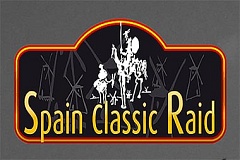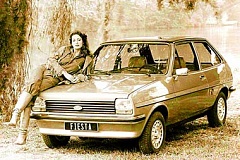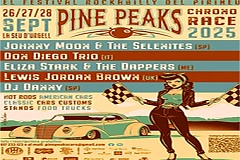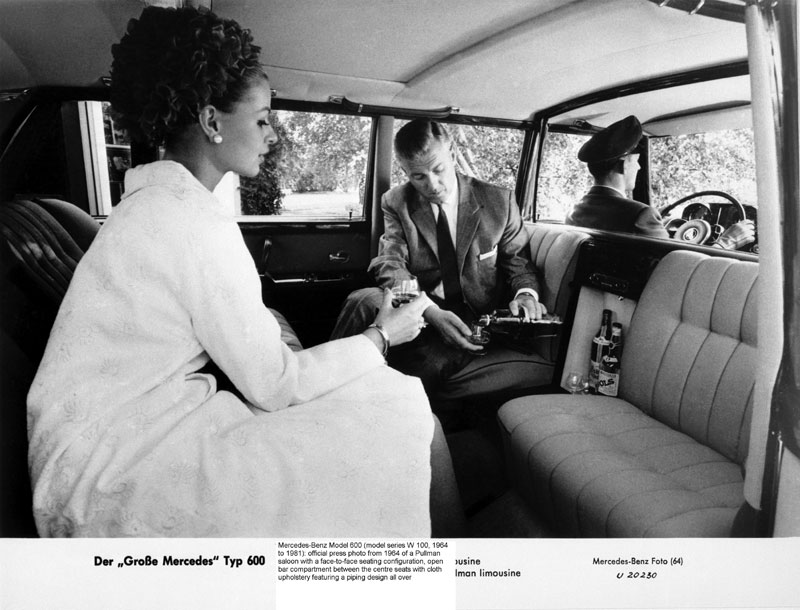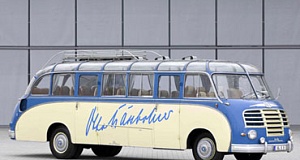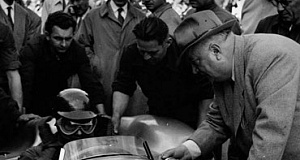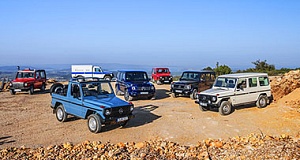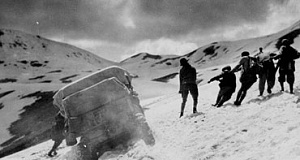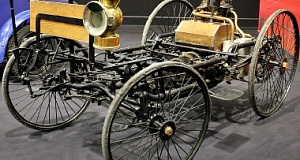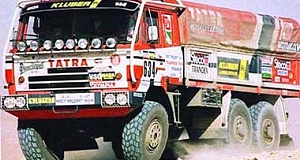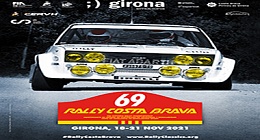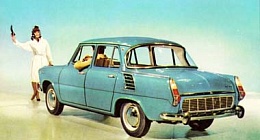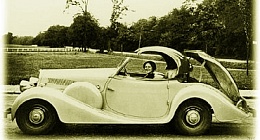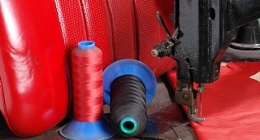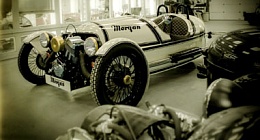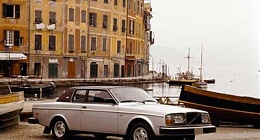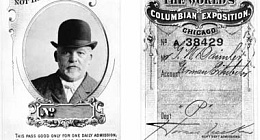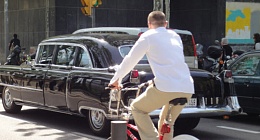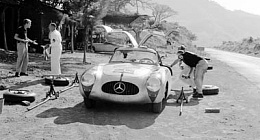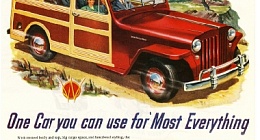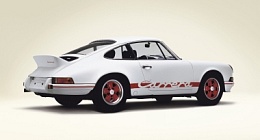La historia se remonta a los orígenes del coche.
El vehículo como vehículo, representa el aspecto que distingue, acorde con el estatus .Un coche impone e impresiona pero no se limita a servir como un fin para sí mismo, ya que transporta a pasajeros.
A través de su presencia tiene el efecto de reforzar las apariencias , si bien es cierto que las evaluaciones deben inevitablemente variar, dependiendo de la época en cuestión y los automóviles utilizados en cada caso. Suelen ser también un reflejo de su tiempo y un coche de representación no sólo impresiona por su tamaño y estilo, sino que con frecuencia por el progreso técnico y también es admirado, por su gran comodidad.
- 1Modelos Primera Guerra Mundial
- 1924 a 1930 Mercedes 24/100/140 PS, 1924-1926. Mercedes-Benz 24/100/140 PS, 1926- 1928. Mercedes-Benz 24/100/140 PS Typ 630, 1928-1930
- 1930-1938 Mercedes-Benz Typ „Großer Mercedes“ (W 07), 1930 up to 1938
- 1938-1943 Mercedes-Benz Model ‘Super Mercedes’ (W 150), 1938 up to 1943
- 1951-1962 Mercedes-Benz 300 to 300 d (W 186 II to W 189), 1951 up to 1962
- 1964-1981 Mercedes-Benz 600 ‘Super Mercedes’ (W 100), 1964 up to 1981
- Desde 2002 Maybach (W 240 series), since 2002
Galería de imágenes de los modelos más representativos de la marca a lo largo de los años divididos en siete etapas y precios en la época.
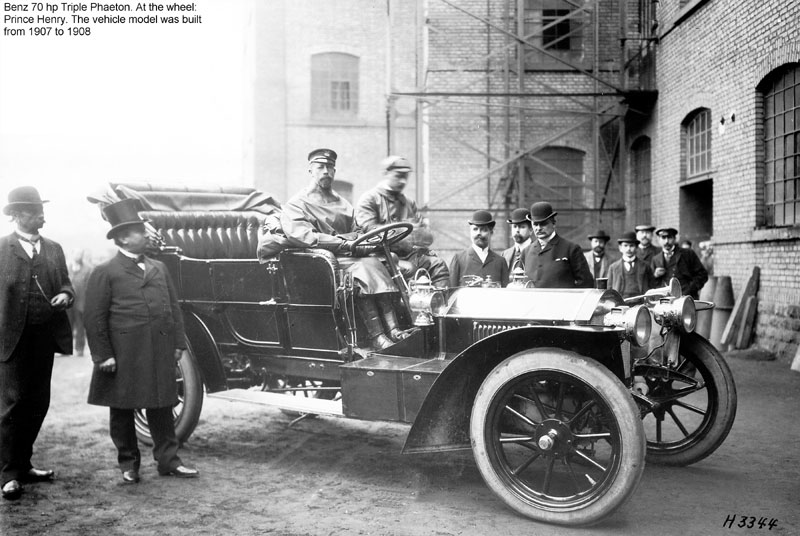
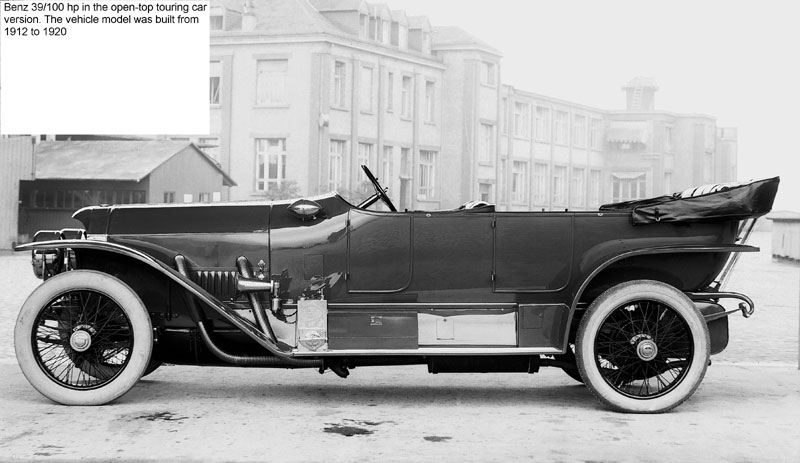
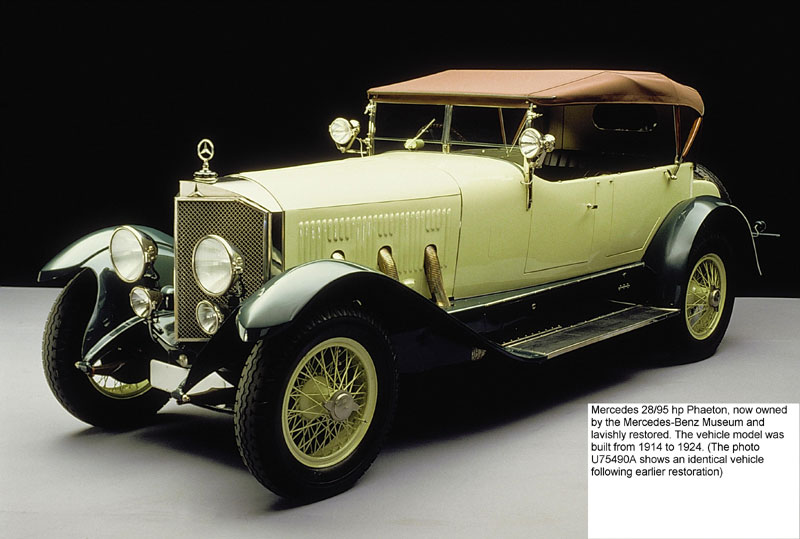
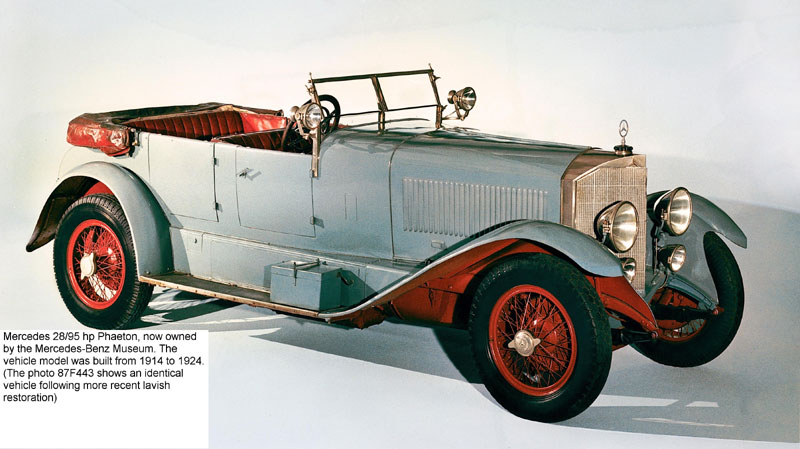
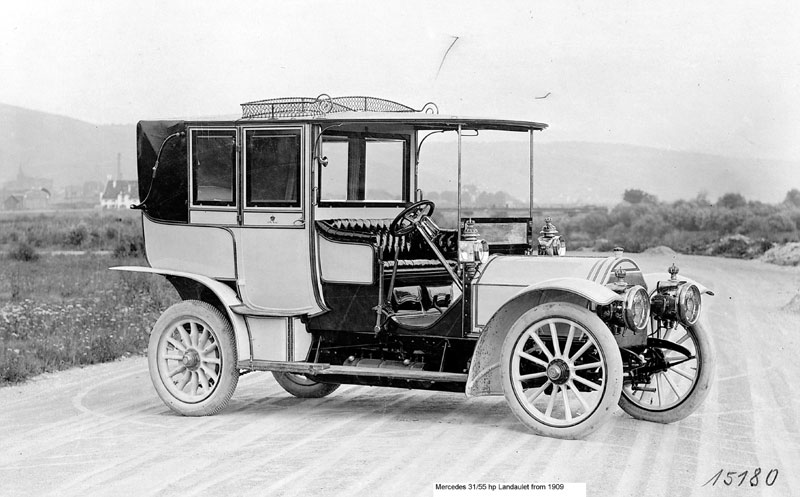
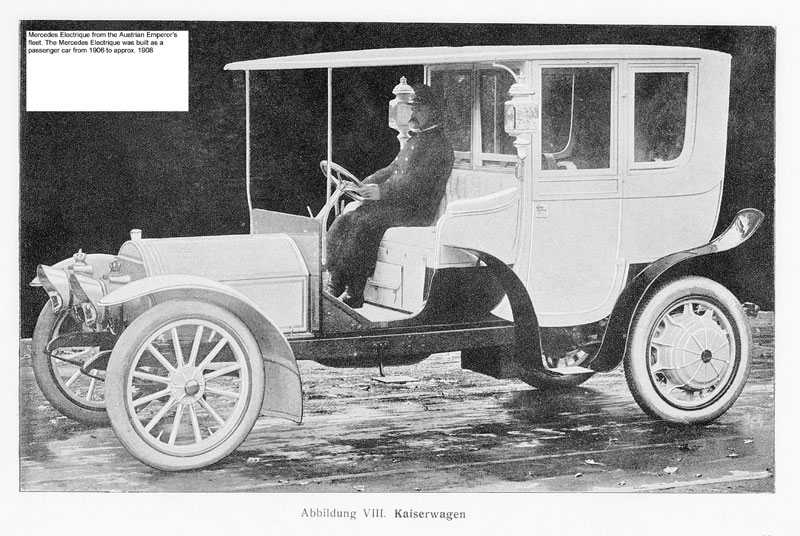
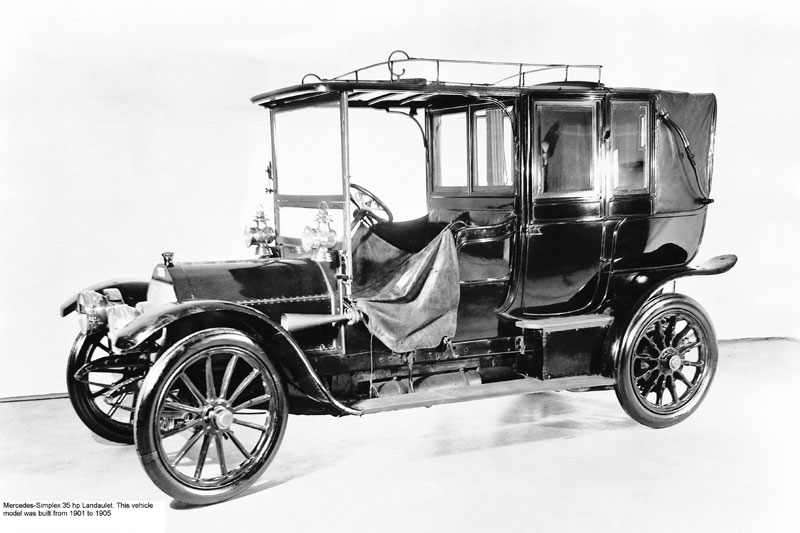
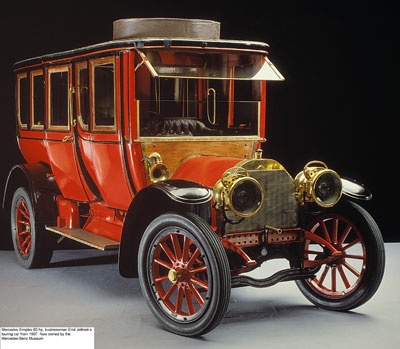
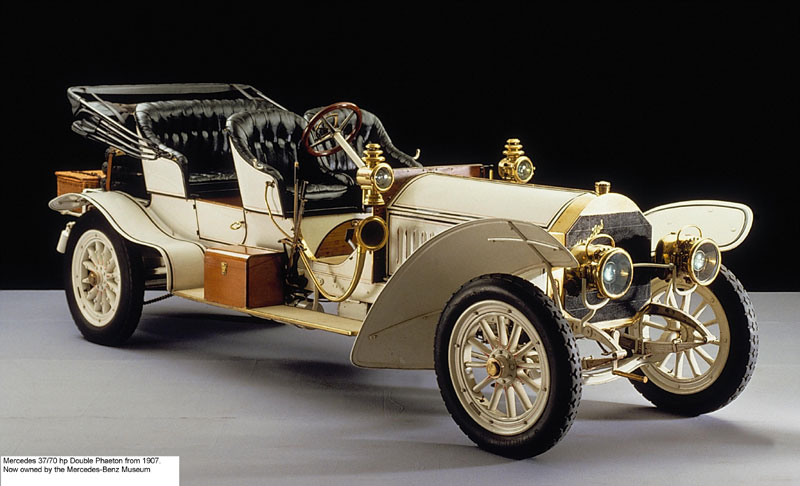
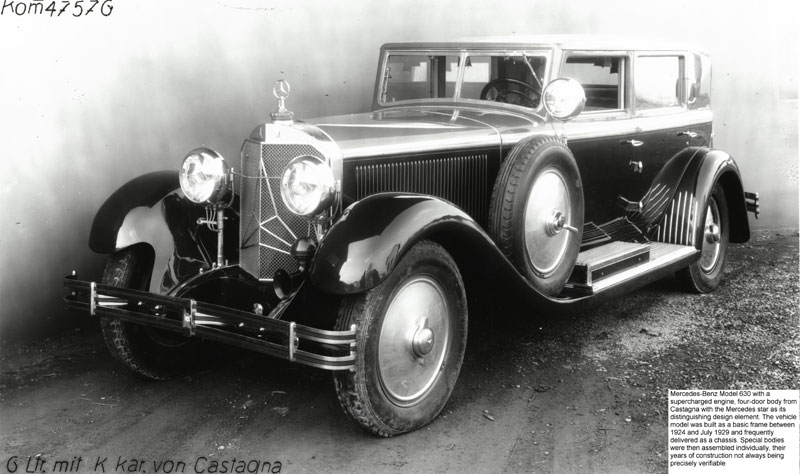
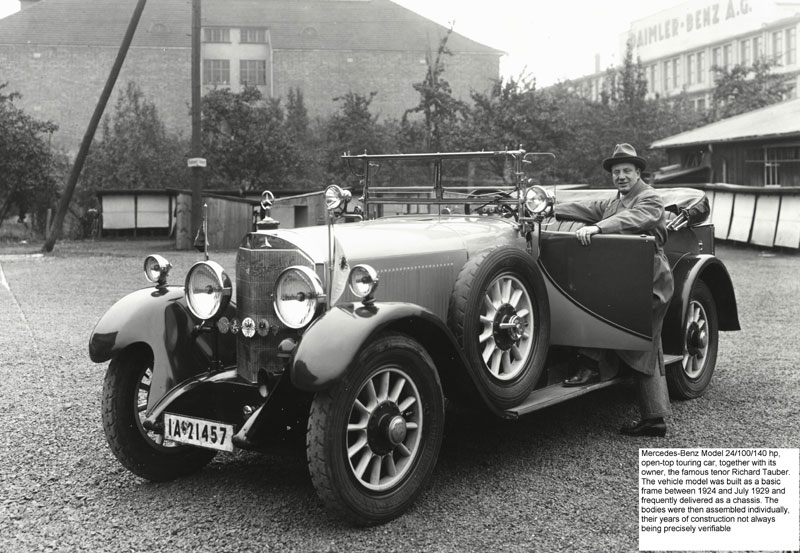
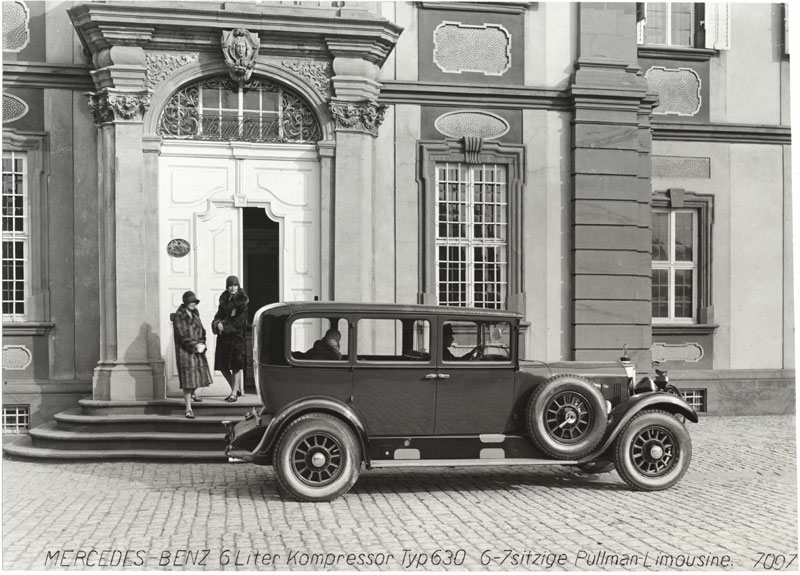
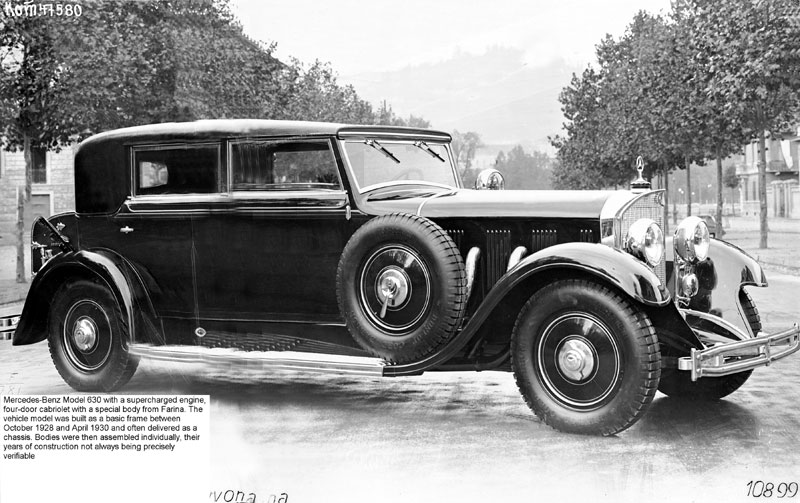
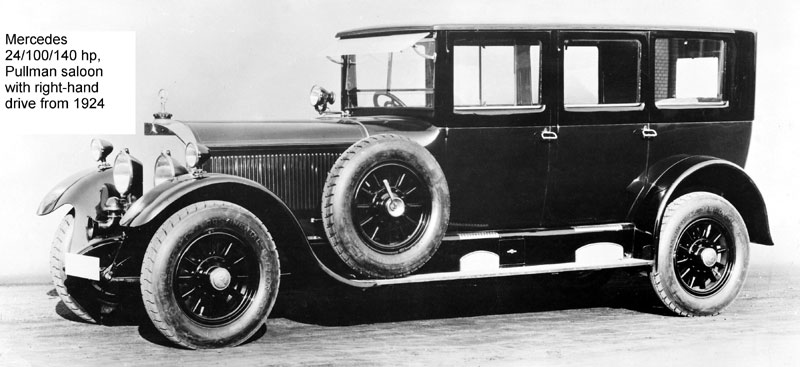
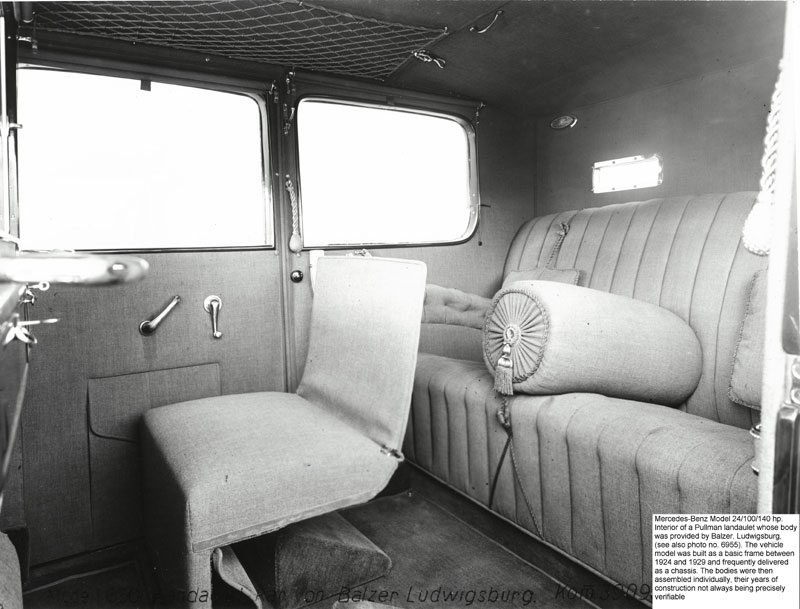

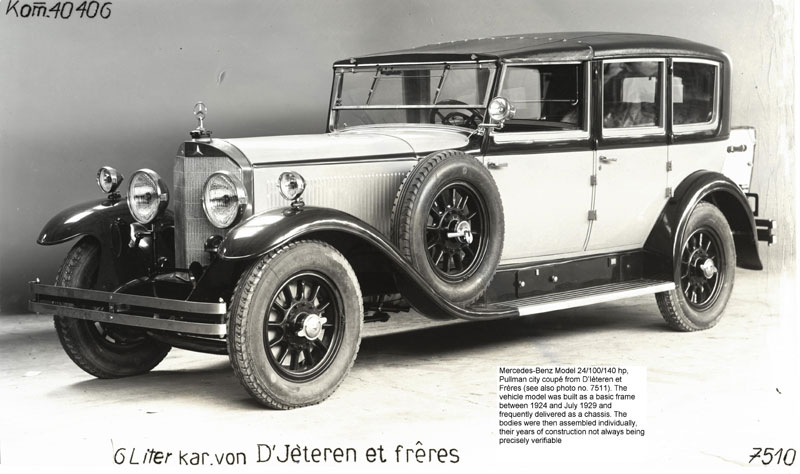
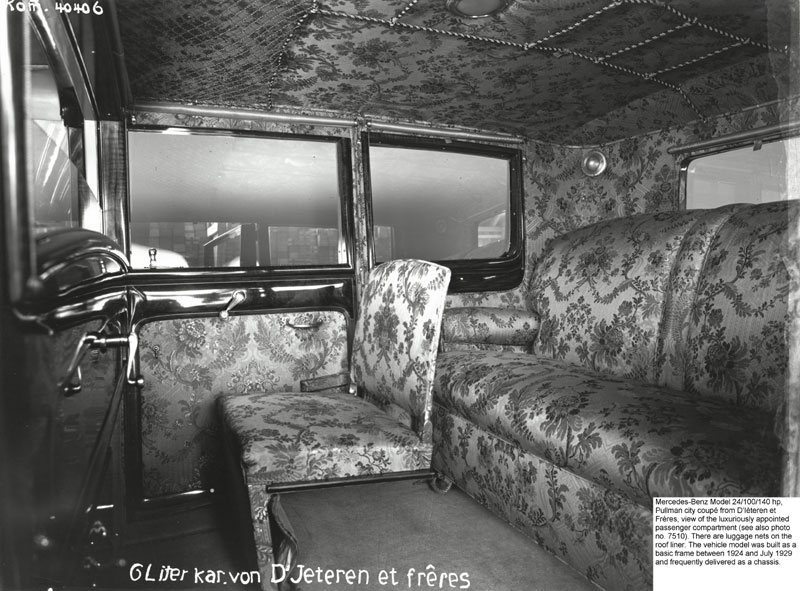
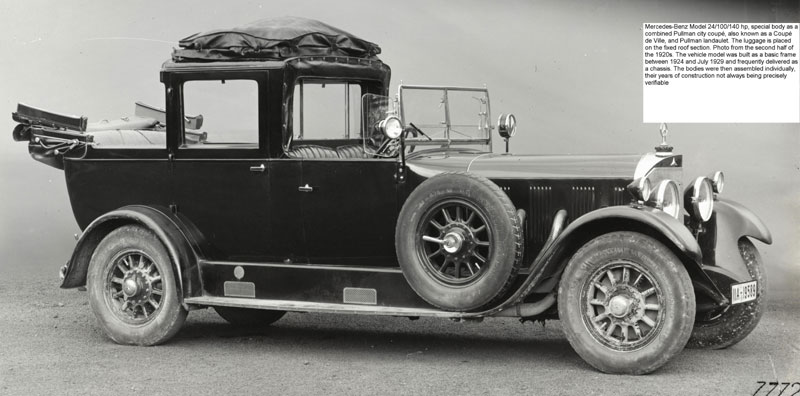
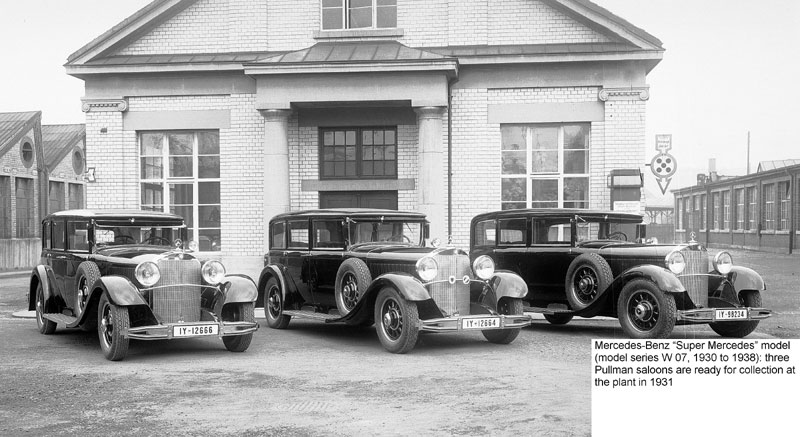
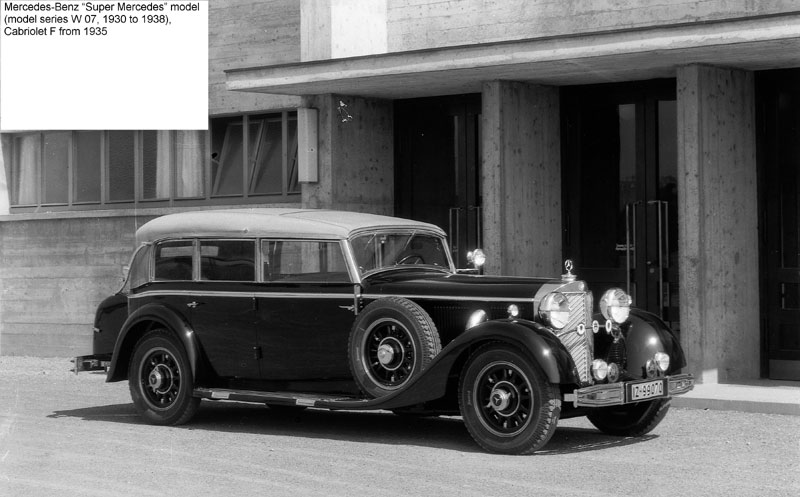
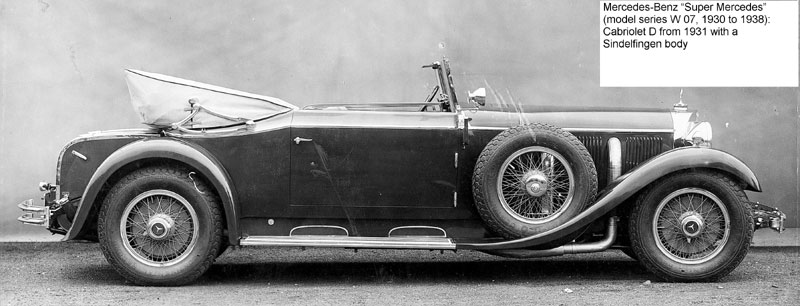
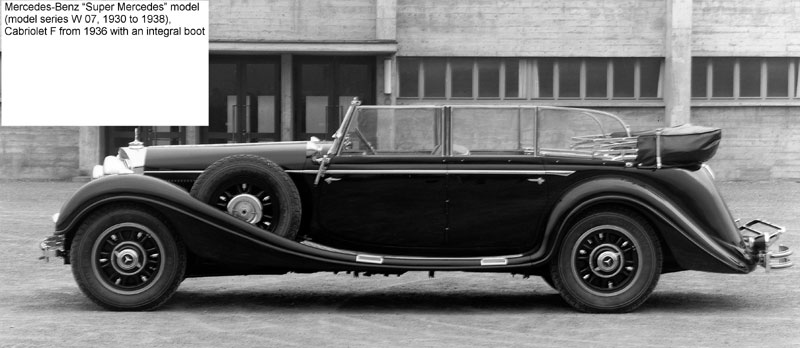
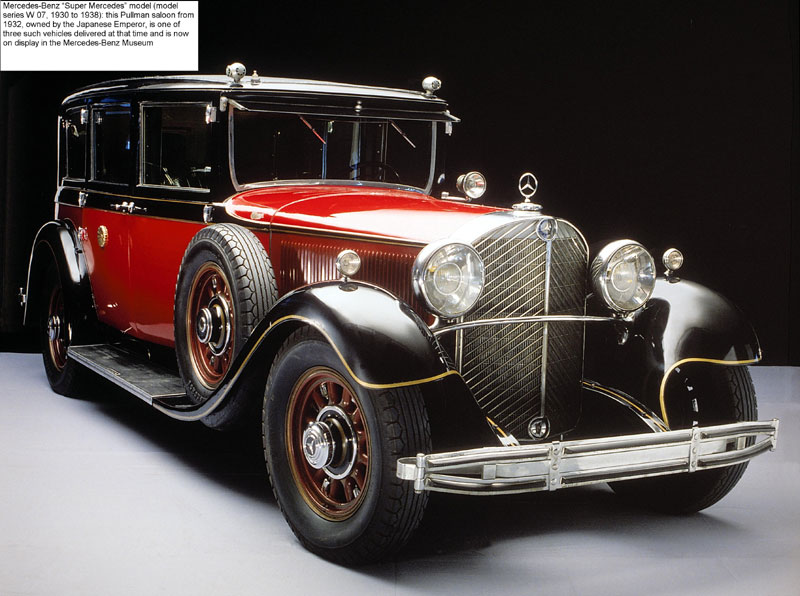
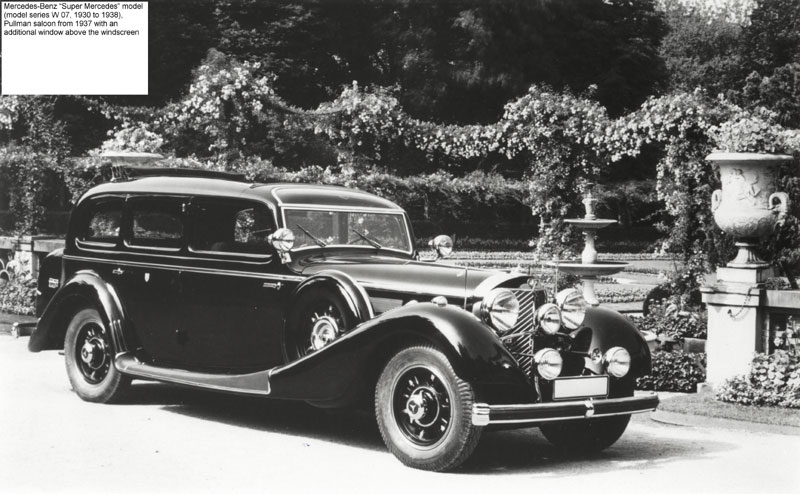
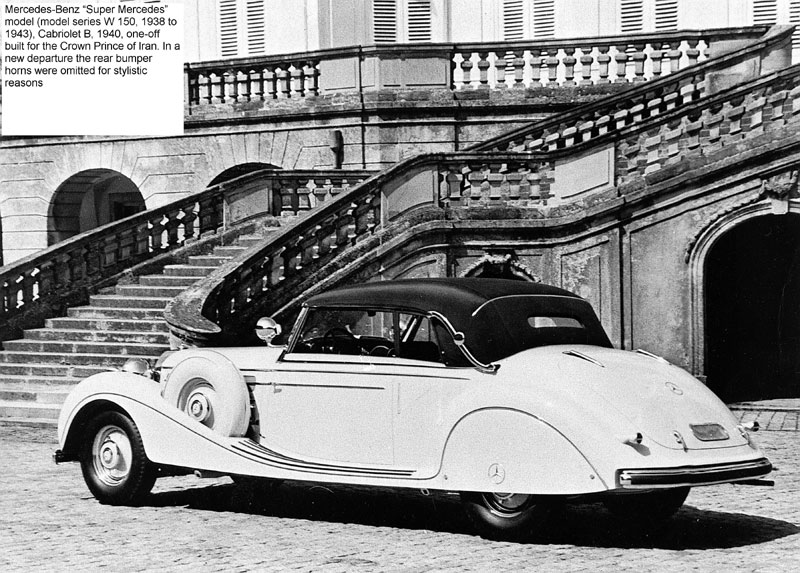

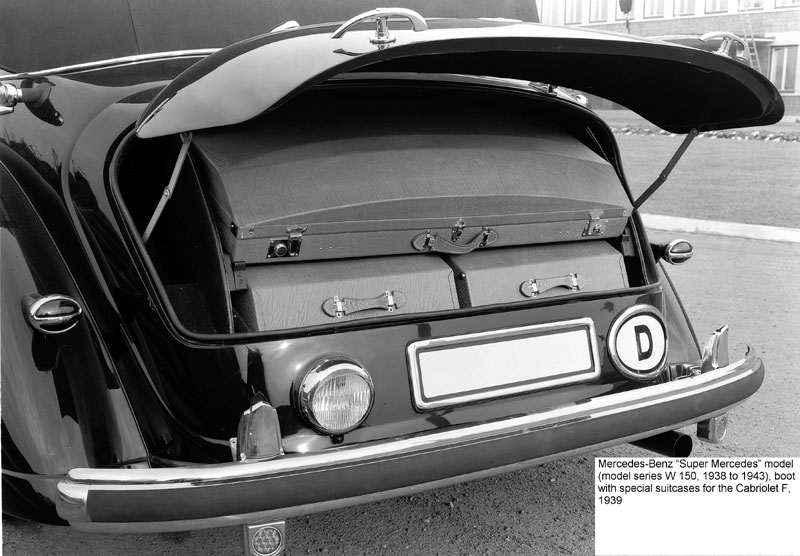
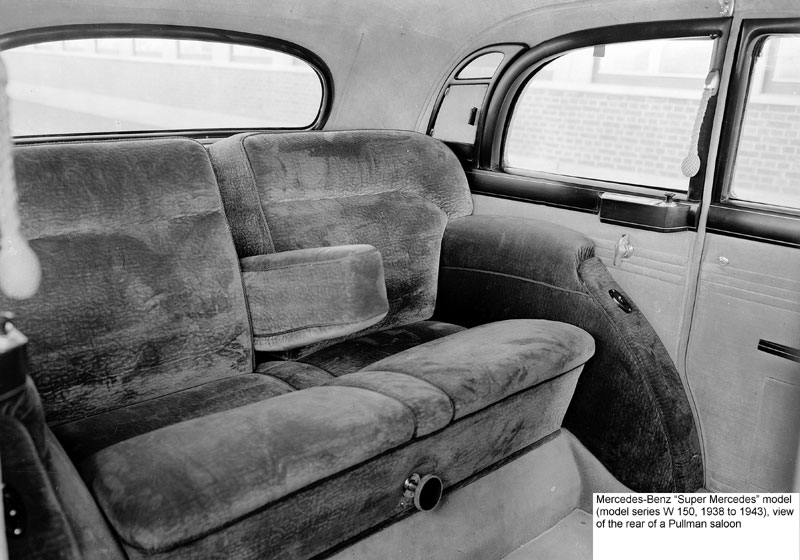
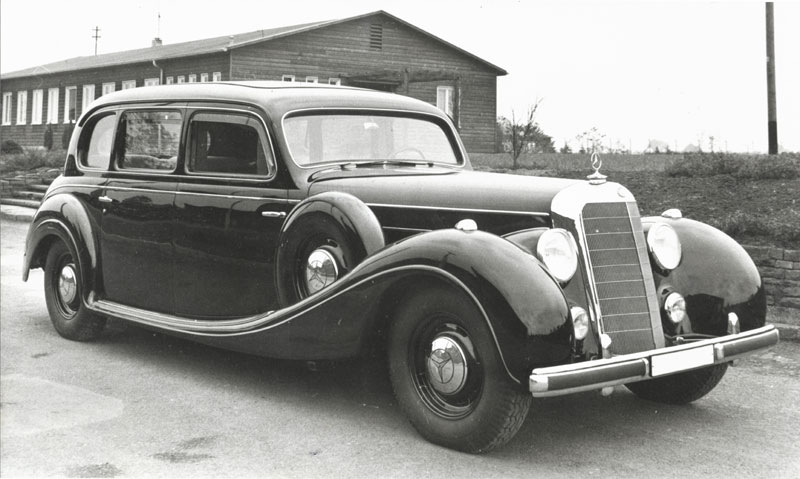
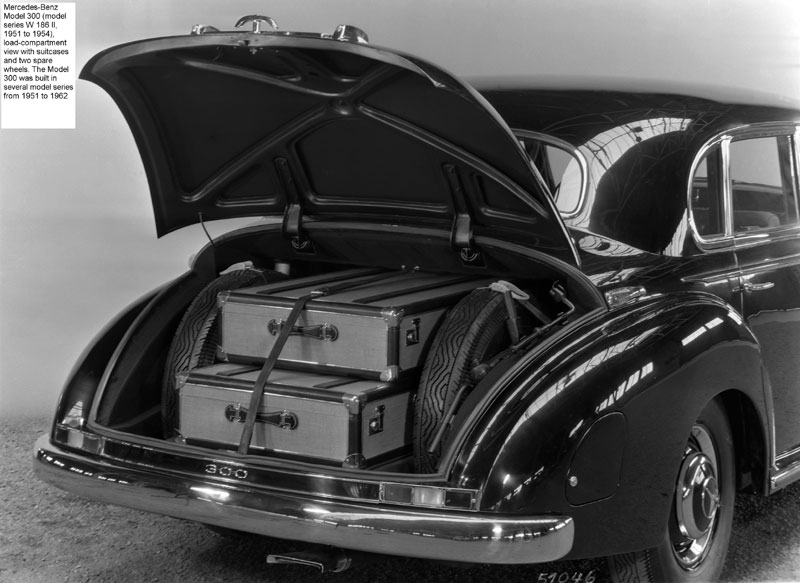
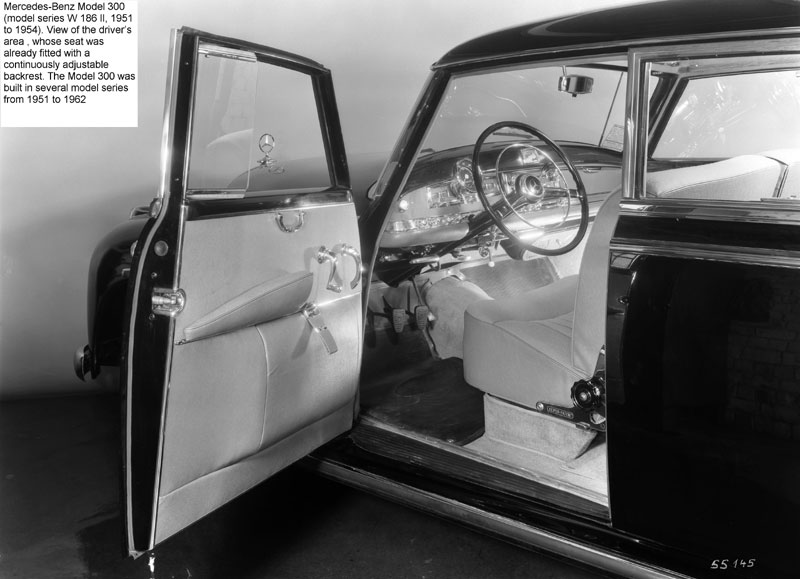
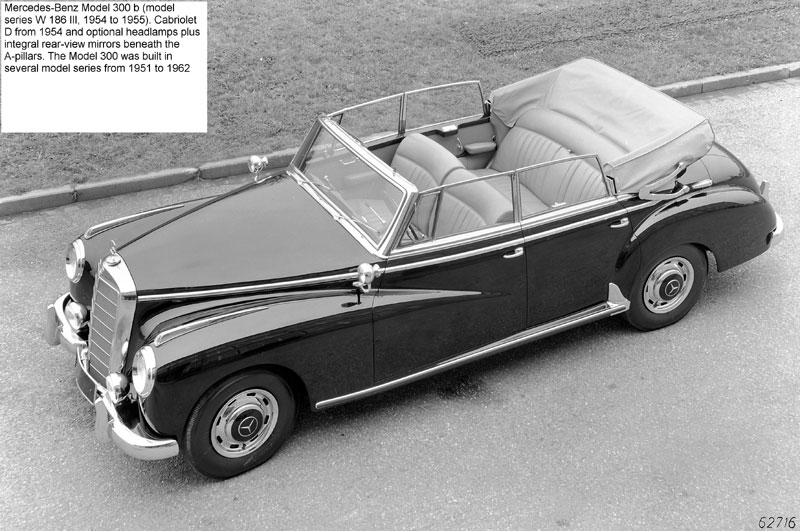
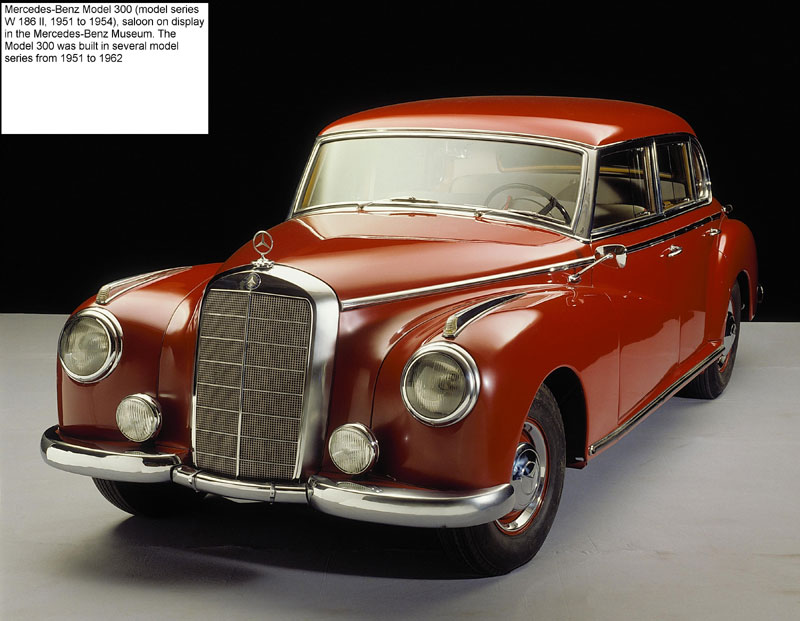
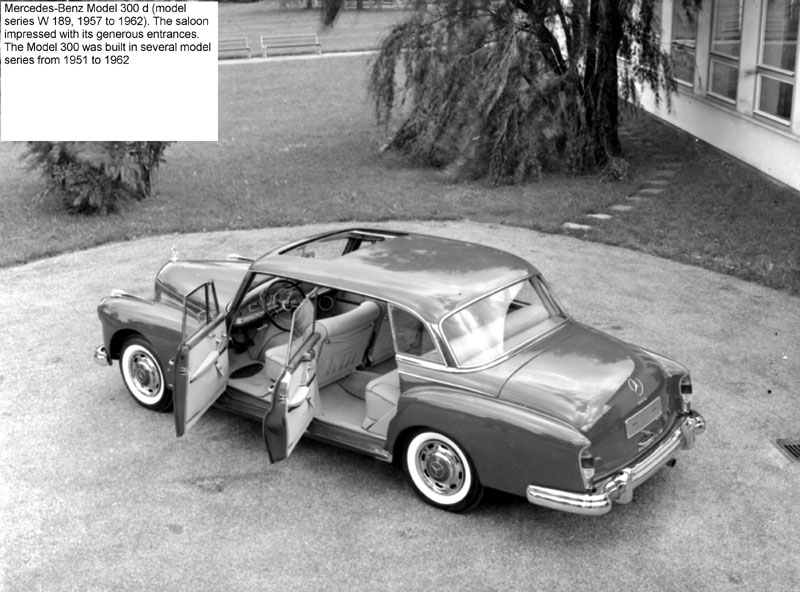
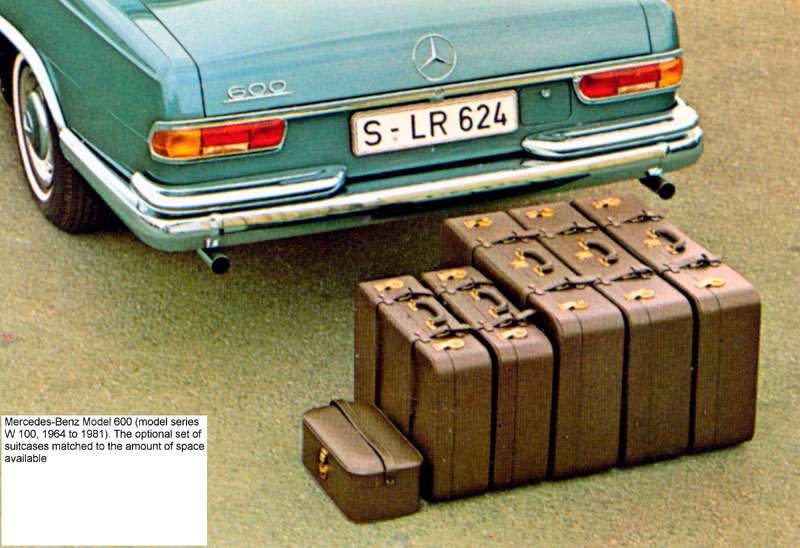
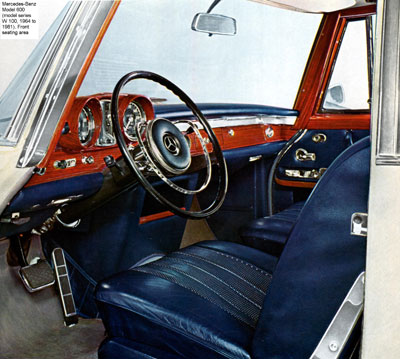
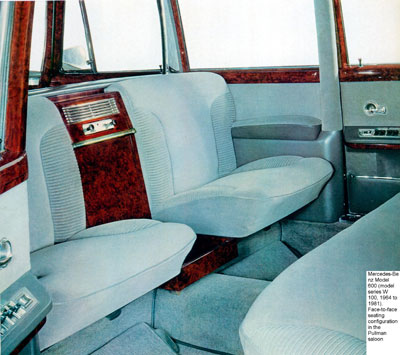
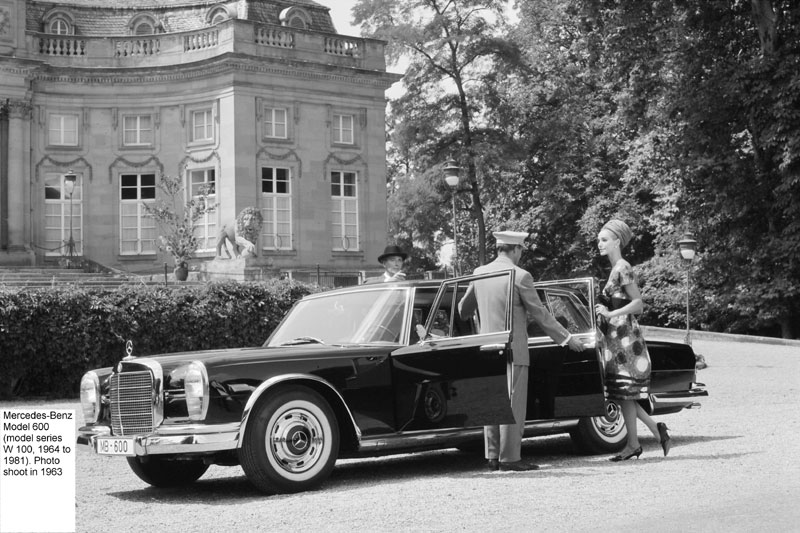
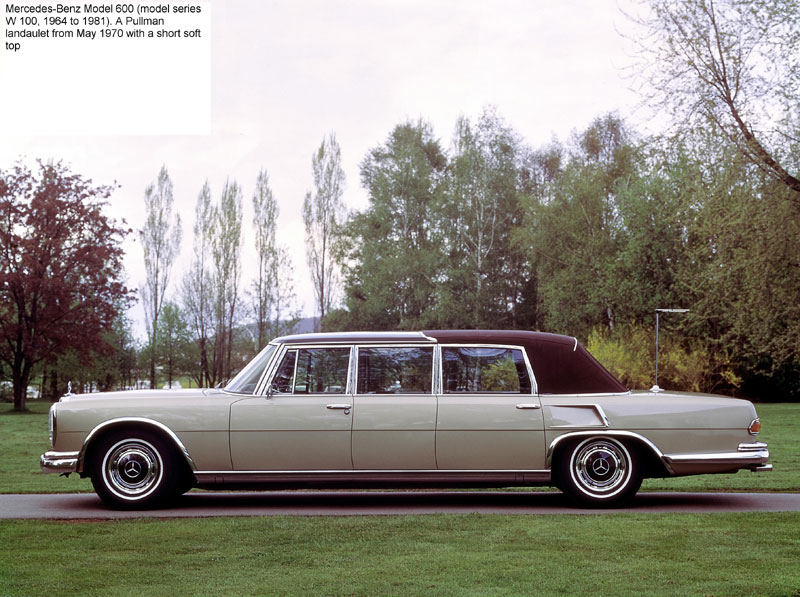
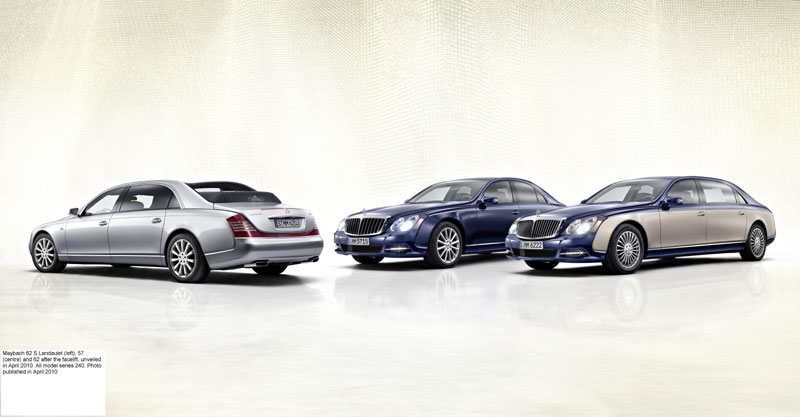
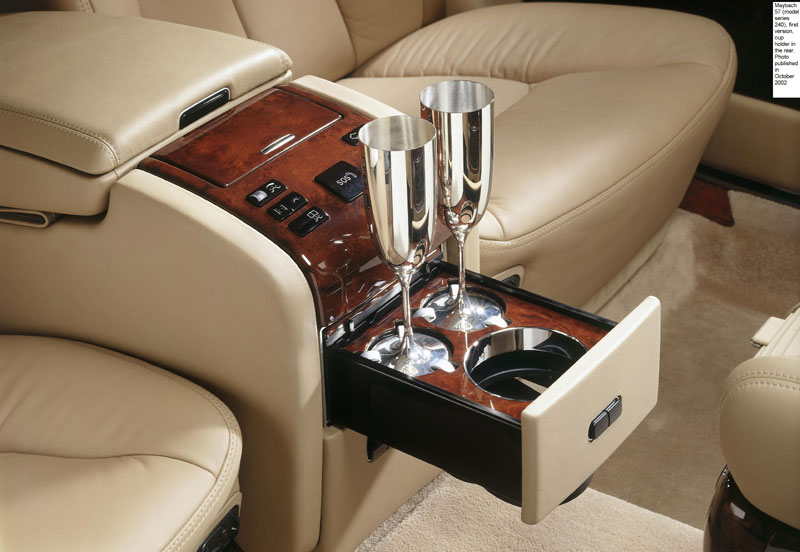
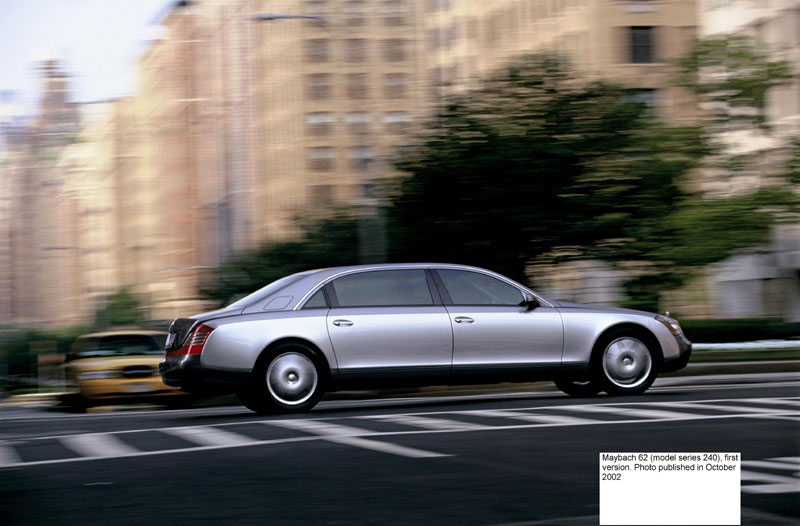
Representative vehicles in the history of Daimler AG
· Stature and style, combined with technical progress and outstanding comfort
· The history dates back to the origins of the car
Stuttgart – The representative vehicle boasts a distinguished appearance befitting its status. For an imposing car that makes a big impression does not merely serve as an end in itself as it transports passengers. Through its very presence it has the effect of reinforcing impressive appearances – whilst it is true to say that appraisals will inevitably vary, depending on the particular epoch in question and the cars used in each case. They are always also a reflection of their time, and a representative car does not just impress with its stature and style; it often documents technical progress, too, and is admired for its outstanding comfort.
The tradition of representative vehicles from the Mercedes-Benz brand and the predecessor companies Benz & Cie. and Daimler-Motoren-Gesellschaft (DMG) is a story characterised by various interruptions. Having said that, up until 1981, the year in which production of the Mercedes-Benz 600 finished, it was absolutely indisputable that the brand had to be present in the exclusive vehicle category. Around another two decades would pass before the then DaimlerChrysler AG once again established itself in the high-end segment: with the Maybach brand in 2002.
The era of representative vehicles began at the beginning of the 20th century, some twenty years after the invention of the automobile. It was initiated by the same circle from the wealthy bourgeoisie that made a name for itself as sponsors of motor racing. The businessman Emil Jellinek, for instance, was one of the friends and promoters of the car who repeatedly made significant contributions to the vehicles’ advancement by providing some valuable food for thought in the early days. One of the results of this work was Jellinek’s 1907 touring car, which can now be admired in the Mercedes-Benz Museum, and which already embodied some of the fundamental characteristics of a representative vehicle. When he had a touring car built, Jellinek, who was always wont to think a little further ahead than many of his contemporaries, did not opt for one of the widespread tourer or phaeton carriages. Instead he chose a comfortable, imposing saloon, which – with an engine output of 60 hp (44 kW) – was in the upper echelons of the model hierarchy of the day. In contrast to many of his peers, Jellinek even thought of the driver, who was also protected from the elements by a fixed roof, doors and windows.
It should be pointed out here that back in those days the open carriage was the usual body form and the closed vehicle the special, exclusive variant, and in many cases this applied up until the end of the 1930s – for representative cars, too.
The nobility, predominantly lovers of horses and coaches, only discovered the car for representative purposes after the moneyed bourgeoisie. Tsar Nicholas, for example, is reported to have been a riding enthusiast who valued old customs – but not the car, at least not to start with. The German Emperor Wilhelm II is said to have had a similar attitude. Nevertheless the automobile gradually found its way into the aristocracy’s stables and slowly but surely turned them into car parks.
Representative cars up until the First World War
· Included in the fleets of VIP customers
· Individual bodies on the plant chassis were the norm
· Highly technical cars
As early as at the end of 1905, Daimler-Motoren-Gesellschaft (DMG) delivered five Mercedes-Simplex 45 hp with various bodies to the court of the Tsar in St. Petersburg. Along with other customers of high rank, the Tsar was never satisfied with owning just one vehicle; the tsarist fleet is also said to have included a Benz 60 hp and a Mercedes-Knight 16/40 hp.
Over the years, as well as various Mercedes-Simplex, the German Emperor’s fleet came to include three Mercedes-Knight, a Mercedes 28/95 hp, a Mercedes 15/70/100 hp and a Mercedes-Benz 770 ‘Super Mercedes’ Cabriolet F from 1932. Today the latter is on display in the Mercedes-Benz Museum, along with the 1935 armoured Pullman saloon of the same model, owned by the Japanese Emperor Hirohito.
By 1912 Benz & Cie. numbered the German Emperor, the Russian Tsars and the Swedish Royal Family amongst its most famous customers.
The sports-enthusiast brother of the German Emperor, Prince Henry of Prussia, was not only the founder and patron of the Prince Henry Tours named after him, as well as being the inventor of the windscreen wiper; he himself often took part in events in his open-top 70 hp Triple Phaeton. A particularly impressive car was the Model 39/100 hp, built by Benz in the years 1912 to 1915. Because of its dimensions and clear lines it signalled a sense of noble distance. However the shock caused by the global economic crisis of 1907 led to Benz becoming established as a high-profile provider of vehicles to the lower middle class, but without losing sight of the spectrum of representative cars. It was with this concept that Benz succeeded in positioning itself clearly ahead of DMG in the period before the First World War in terms of the number of vehicles produced.
At DMG the dominant top-range car from 1910 to 1914 was the Model 37/95 hp. With its prestigious presence, its owners – who were often members of the aristocracy – were able to cut a grand figure. In 1913 the chassis came with a price tag of 23,000 Marks – the usual base price of the time. Then either the plant would fit an individual body to this or a body assembler would carry out the work. This was where the car manufacturers were in competition with the finest body assemblers of the day. With its large-piston four-cylinder engine with 9.5 litres of displacement and a chain drive system, however, it represented a dying form of automotive technology. For a period of many years, particularly in the case of vehicles with powerful engines, the cardan drive system was favoured over chain drive due to the gentler power transmission.
In 1914 it was replaced by the Mercedes 28/95 hp. As a premium-segment vehicle it took its leave of the four-cylinder engine and the chain drive system, like the Benz 39/100 hp. The six-cylinder engine, created by Paul Daimler, was built with a design largely based on that of the 1912 DF 80 aircraft engine, which was awarded the ‘Emperor’s Prize’. The engine had V-shaped overhead valves, which were operated via an overhead camshaft and rocker arms. The camshaft was driven from the front end of the crankshaft by a vertical shaft.
Due to the war only 25 units of Model 28/95 hp were manufactured during the years 1914 and 1915. Production started up again after the end of the war, when Paul Daimler took the opportunity to have the engine revised. The individual steel cylinders were replaced by cylinder blocks cast in pairs, but the coolant jackets welded in pairs remained. The valves which been open up until then were now sealed with oil-tight light-alloy valve covers for each cylinder pair. The mixture was supplied via two Pallas updraught carburettors, which each fed three cylinders. The two intake manifolds, again Y-shaped, were connected with each other via a balance pipe to ensure even mixture supply.
Following the First World War, the target groups of potential customers changed – the aristocracy diminished in importance in this respect, with personalities from the fields of economics, film, theatre, politics and industry taking its place. The Mercedes 28/95 hp remained in existence until 1924; there were 590 vehicles in all. Whilst the term ‘Super Mercedes’ was not coined until after its time, it was certainly deemed to be worthy of this description. The number of units built was substantial, especially bearing in mind the prevailing circumstances and compared with vehicles of a similar profile which would follow in its footsteps. But this imposing vehicle also served to cover a wide customer spectrum due to the fact that there were three different wheelbase versions, which meant that it was not restricted to just large saloons or open-top touring cars.
Representativos2
Mercedes 24/100/140 PS, 1924-1926. Mercedes-Benz 24/100/140 PS, 1926-1928. Mercedes-Benz 24/100/140 PS Typ 630, 1928-1930.
· A belt-driven supercharger gave output a significant boost
· Numerous body variants were available ex factory
Paul Daimler left DMG in 1922 in disagreement with the Supervisory Board. It had called for easier-to-sell models in the lower price ranges, whilst Daimler wanted a new model with eight cylinders. His successor was Ferdinand Porsche, who had come from Austro Daimler. He had already taken over from Daimler once before, at Austro Daimler’s forerunner, the company Austrian Daimler-Motoren-Gesellschaft mbH in the town of Wiener Neustadt. What was not known at the time was that Porsche’s main development focus was also more on large and expensive cars rather than small and lower-priced models. So in hindsight it is not surprising that the first project Porsche undertook was to design a representative twin model series of new luxury vehicles with displacements of 4 litres and 6.2 litres. The only differences between the two were to be found in the swept volume of the engines, in the wheelbase, the overall length and a few points of detail in the body. The length available for the body on the chassis and the technically sophisticated basis were identical. The larger engine required a wheelbase that was 120 millimetres longer and resulted in the chassis weighing 100 kilograms more.
Porsche followed his previous convictions at DMG, too, believing that a good and powerful engine also had to be aesthetically pleasing. For the new six-cylinder engines he adopted the basic concept that he had also used for his engine designed at Austro Daimler, from that company’s Model AD 617. The common features were the light silumin-cast crankcase with drawn-in dry cast cylinder liners, the crankshaft with only four bearings and the removable cylinder head with an overhead camshaft, which used rocker arms to operate the valves positioned in line via valve levers. The camshaft was driven by a vertical shaft driven from the clutch side. Together with the manual transmission the engine formed a cohesive component and thus at the same time a huge functional block. It comprised all the levers required to operate the car, including the steering gear and the steering column with the steering wheel. Fitted to the transmission were the starter, the air pump for inflating the tyres in case of damage to them, the hand levers for the gearshift and handbrake plus the pedals for the clutch and brake.
For his new designs at DMG, which arrived on the market in 1924, Porsche adopted the principle of supercharging which had been introduced by Paul Daimler. The positive-displacement belt-driven supercharger, with a high-ratio design of around 1 : 3, was located at the front end of the engine in a light-alloy housing fitted with cooling ribs. It was switched on by pressing down the accelerator, similarly to the kickdown position familiar from today’s automatic transmissions, via a multiple-disc clutch. When the accelerator was released it was slowed down by a multiple-disc brake located on the crankshaft. For the two large touring cars Porsche used the principle of the pressure carburettor engine – situated between the belt-driven supercharger and the combustion chamber – which had long been championed at Daimler-Benz.
An early form of the multifunction steering wheel
The characteristic features which stood out at that time compared with the passenger cars produced up until then were the removable cylinder head, the dry multiple-disc clutch in place of the double-cone clutch with a leather gaiter used thus far, the slightly pointed nickel-plated honeycomb radiator instead of the previous more deeply contoured and painted pointed radiator, the introduction of an actuating ring on the steering wheel for operating the horn by pressing the upper part of the ring and the dimming device by pressing the lower part of the ring, and the internal expanding brake for all four wheels.
In Porsche’s two-passenger car with a 4-litre and 6.2-litre engine, the Model 24/100/140 hp with the larger unit was the driving force – not in terms of the number of vehicles built – the smaller and less-expensive car retained the upper hand there. But when it came to the image factor – esteem, as people would say in those days – the car with the brawny engine was clearly the more representative vehicle.
Over the years changes were made to the model designation. To start with it was called the Mercedes 24/100/140 hp, and then after the merger in June 1926 Mercedes-Benz 24/100/140 hp. In 1928 it became the Model 630, as the previous rather cumbersome name was not much of a purchasing incentive, and also the aim was to introduce uniformity with the Stuttgart, Mannheim and Nürburg vehicle names, which were also given a model number which corresponded to the displacement.
The larger engine had a displacement of precisely 6240 cubic centimetres, which, strictly speaking did not justify the figure ‘630’ in the model designation which was supposed to refer to the displacement. For nearly 100 years, history served up a parallel episode: the V8 engine installed by AMG today is also called a 6.3-litre engine, although it has a displacement of 6208 cubic centimetres.
In October 1928, the Model 630 was upgraded, whereby the more powerful engine with 160 hp (118 kW) from the K model was also supplied as an option for the normal touring car. In the plant’s documentation this variant was described as the ‘Model 630 with a K engine’ or ‘6-litre car with a K engine’. This combination assumed the flagship position in Daimler-Benz AG’s passenger car range up until the ‘Super Mercedes’ appeared on the scene in October 1930. It developed into the somewhat more durable variant, and – eventually – also the more sought-after one. Production of the chassis and car with the 140 hp (103 kW) engine ceased in 1929, that with the 160 hp (118 kW) K engine a year later. Naturally this did not exclude so-called stock vehicles from only being sold and registered much later.
As the years went by some changes were made so as to keep the vehicles up to date. These included those carried out in 1926 to replace the rear cantilever springs by semi-elliptic springs, which were fitted beneath the rear axle from the outset. From autumn 1927 the three metal tubes were added as trim for the exhaust pipes which ran on the outside of the bonnet at that time, and from October 1928 customers could choose to have the aforementioned engine from the Model K installed – just in the open touring car at first but then later in all the other body variants too. This was followed in 1928/29 by the inclusion of a Bosch-Dewandre brake booster.
As development continued there were only minimal changes to the range of bodies on offer. Particularly impressive features by current standards include the two open-top touring cars with five or seven seats, which were also available with an attachable saloon body in the style of a present-day hardtop. Between 1926 and 1928 the spectrum of bodies available and the pricing was as follows:
Prices for Model 24/100/140 hp
Chassis 19,250 RM
5-seater open-top touring car 23,800 RM
5-seater open-top touring car with removable Pullman roof structure 26,500 RM
7-seater open-top touring car 24,000 RM
7-seater open-top touring car with removable Pullman roof structure 26,750 RM
6/7-seater coupé 26,750 RM
6/7-seater fixed Pullman saloon 27,750 RM
From 1929 onwards, the range of bodies was reduced, but the more powerful K engine could be ordered for an additional charge of 2,000 Reichsmarks (RM).
Prices for Model 24/100/140 hp – Model 630
Chassis 19,250 RM
6/7-seater open-top touring car 24,000 RM
6/7-seater Pullman saloon with wide door pillars 25,000 RM
6/7-seater Pullman saloon with narrow door pillars 27,750 RM
4/5-seater interior-drive cabriolet 26,500 RM
6/7-seater Pullman cabriolet (special version) 28,000 RM
The bodies were manufactured either at the Sindelfingen plant or, as was the norm back then, especially where premium-segment cars were concerned, purchased from internationally renowned body assemblers in accordance with customer requirements. In this case special requests were then met, such as the extra-high Pullman saloon for Reich President Paul von Hindenburg, so that on official occasions he was able to wear his spiked helmet and in civilian dress his top hat inside the vehicle. Hindenburg also had a Pullman cabriolet at his disposal. Both cars were specially designed at the Josef Neuss car factory in Berlin.
The following are examples of well-known and renowned companieswhich supplied bodies for the Mercedes-Benz 24/100/140 hp Model 630:
Balzer, Ludwigsburg
Castagna, Milan D’Ieteren Frères, Brussels
Erdmann & Rossi, Berlin Farina, Milan
Geissberger, Zurich Hibbard & Darrin, Paris
Million Guiet, Paris Josef Neuss, Berlin-Halensee
Papler & Sohn GmbH, later, Papler GmbH, Cologne Van den Plas, Brussels
Saoutchik, Paris Voll & Ruhrbeck, Berlin-Charlottenburg
Zschau, Leipzig
VIP customers included:
Reich President Paul von Hindenburg
King Gustav of Sweden
King Alfonso of Spain
Emil Jannings, actor
Richard Strauss, composer
Richard Tauber, singer
Jan Kiepura, singer
Oscar R. Henschel, industrialist
In total, 1080 vehicles of the Mercedes-Benz 24/100/140 hp Model 630 were constructed between 1924 and 1930. In addition to this, there were also 117 vehicles with the powerful K engine.
Representativos3
Mercedes-Benz Typ „Großer Mercedes“ (W 07), 1930 up to 1938
· A new landmark among premium cars, also available in a special-protection version
· Superb handling in spite of its conservative chassis design
· Available with and without supercharging
‘With this model Germany’s automotive manufacturing industry regained its place at the forefront of the special segment, which had actually always been Germany’s domain right from the beginnings of automotive engineering – coupled with the name Mercedes-Benz. One can safely assume that it is precisely those circles which always consider that only the very latest in excellence are just about sufficient for their requirements will focus their interest on this model.’ That was the conclusion drawn by the editor of the renowned ‘Allgemeine Automobil-Zeitung’ (AAZ) in 1930 about the ‘Super Mercedes’ unveiled at the Paris Motor Show. This was the official name of the Mercedes-Benz Model 770.
Around the end of the 1920s, the time was ripe for Mercedes-Benz to set a new landmark in the premium car segment. The Model 630 was no longer in keeping with the times, and Daimler-Benz was in danger of losing its standing in the top car class in view of the Maybach 12 model with a V12 engine (7-litre displacement, 150 hp/110 kW) which was brought out at the end of 1929 by its competitor Maybach, and the Zeppelin 8 model presented at the Paris Show a year later (8-litre displacement, 200 hp/147 kW). However, because of the brand’s reputation and also its recent in-house experience, Daimler-Benz was very careful when it came to new technical features. In 1932, the specialist publication ‘Motor und Sport’ reported on this matter on the occasion of the ‘Super Mercedes’ test:
‘In contrast to the American view, which is in favour of the V-engine of the 12- or 16-cylinder type as far as representatives of this price category are concerned, they have remained remarkably sober in giving the Super Mercedes an eight-cylinder in-line engine. With a vehicle whose fundamental tendency is towards exclusivity to such a great extent they thought that any excursion into uncharted waters would be fatal. That is how the new design from Daimler-Benz came to be a happy avowal of traditional links.’
It is true that from a technical point of view, the ‘Super Mercedes’ – known internally as W 07 – did not constitute a great leap forward into the realm of new technologies. There was certainly much expectation amongst the general public surrounding the Mercedes-Benz 170 (W 15) which came out a year later in 1931, with its advanced chassis including independent suspension. But despite its conservative chassis design with front and rear rigid axles, the new top model surprised people with its clear handling as a result of skilful suspension tuning. ‘Motor und Sport’ proves revealing here, too:
‘The Super Mercedes is certainly a fast car. With its saloon body it achieves a speed of 150 km/h. This kind of output is seen as racing-driver speed in many circles.
We know of vehicles, even more recent ones, in which it would be reckless to drive at over 70 km/h, whereas there is no such limit where the Super Mercedes is concerned. In contrast to some statements made by the competition which have come to light, the conduct of the Super Mercedes at all speeds is beyond reproach. Whilst the car’s springing is not as sensitive as it is amongst the American competitors, the Super Mercedes enables a sure driving style that secures cohesion with the road. We do not know of any vehicle that would allow such safe driving with heavy bodies at the breathtaking speed of 120 km/h. And this is probably where the ultimate sense and the ultimate justification for the existence of this vehicle model are to be found. In spite of its orthodox fundamental philosophy, the Super Mercedes presents itself as the worthy conclusion of Daimler-Benz production and as the final enhancement of automotive comfort achievable with today’s means.’
The criticism of large cars’ handling was indeed an issue back then; on another occasion the testers found fault with the handling of the Cadillac V16 and Maybach 12, which were direct competitors of the ‘Super Mercedes’: ‘The rather unpleasant lateral swaying of the body would be dealt with by strengthening the slightly soft springs and by tightening the shock absorbers and would then probably cease; however the question remains whether the springing would be sufficient on poor rural roads – which predominate on long journeys – to retain the high average. As is the case with the new twelve-cylinder Maybach, it is very apparent here that future work must concentrate on improving the handling.’
The ‘Super Mercedes’ was the last very conservatively characterised new design from the still young Mercedes-Benz brand, which came about in 1926 as a result of the merger of the companies Benz & Cie. and DMG. The expectations that had manifested themselves in society with regard to an exclusive car from this brand turned out to be an advantage for it, its place in automotive society having been carved out by the predecessor models.
Advanced engine with supercharging
The 7.7-litre eight-cylinder unit with its in-line design was a progressive, solid engine when compared with the eight-cylinder variant in the Nürburg model, but it could not be classed as sophisticated when compared with the engine in the forerunner of the Model 630. In comparison with the international competitors, one special feature did remain: the vehicle could be equipped – as an option at that time – with a supercharger which increased the output from 150 hp (110 kW) to 200 hp (147 kW). Another special feature of the W 07 model series was the fact that the car was available without a compressor with a deletion allowance of 3000 Reichsmarks. 13 customers availed themselves of this opportunity. The overhead valves were operated by a low-mounted camshaft via tappets and rocker arms. The cylinder head made of grey cast iron was sealed by an electron valve cover. The engine block of grey cast iron chromium-nickel alloy housed the crankshaft with nine bearings and was closed off at the bottom by an electron sump. The cylinder head contained eight spark plugs for the engine which worked with combined battery and magneto ignition.
For the naturally aspirated and belt-driven supercharger version the mixture was supplied via an updraught twin carburettor with an accelerator pump and choke. When the engine was cold the starting procedure was also made easier by preheating of the intake manifold.
The transmission represented a special feature, as an overdrive could also be selected in addition to the usual three forward gears, making a total of six forward gears available. The overdrive was preselected via a lever on the steering wheel, and activated by briefly decelerating without pressing the clutch. The same method was used for shifting down. Throughout the entire construction period the ‘Super Mercedes’ of model series W 07 had the two final-drive ratios i = 4.5 and i = 4.9 at its disposal.
In the case of the early vehicles, lubrication of the chassis was carried out automatically via a central lubrication process which involved the engine oil being pumped out of the sump at the appropriate points of lubrication. On the later models the usual central lubrication employed at Daimler-Benz then was used, whereby every 100 kilometres the tappet of a pump which had to be operated by foot supplied the lubrication points with oil.
The low-frame chassis offset at the front and rear with cross bracing in the centre consisted of closed U-section steel side members.
The front axle, a rigid axle made of chromium-nickel steel with an H-section and the rear rigid axle were connected with the frame by long semi-elliptic springs and were supported in their springing work by lever-type shock absorbers.
Where the early vehicles were concerned, changing the wheels was a tiresome business: the 2.7-tonne car had to be raised manually using a jack. Later cars offered a built-in hydraulic hoist which raised individual wheels. The wheels used were variously-sized wire spoke wheels or what were known as artillery wheels. The latter were wood spoke wheels which had originally been used for heavy artillery canons. 7.00 x 20 low-pressure tyres, 190 x 20 ‘giant pneumatic tyres’ and 8.25 x 17 low-pressure tyres were used.
What was striking during the production period of this ‘Super Mercedes’ was the change in body style that took place within this time, which spanned nearly eight years. To start with there were still very sharp-edged bodies with upright windscreens and tail ends without boots, but over the course of time more rounded shapes developed, as did windscreens which were positioned at more of an angle and what were at first boots merely added on, before they were finally integrated into the overall shape. The wheels were also quite isolated, particularly the front wheels, as they were only covered by a curved sheet metal panel serving as a wing. As time went by, the wings too, with their deep aprons and the wheels they housed, could be seen more as an integral part of the overall design and gave the side view of the body a more homogeneous appearance. It is also interesting to note that the top speed of the final models was raised from 150 km/h to 160 km/h – without increasing the engine output – a modest success achieved by rounder bodies. A special feature in the range of Mercedes-Benz passenger cars was the multifunction steering wheel with five additional functions: these included sounding the horn using the signal ring, turning up and dimming the lights via the button (adorned with the brand emblem featuring the star and laurel wreath) positioned in the centre of the steering wheel, and control of the fuel/air ratio, ignition and overdrive functions which were operated via three levers.
According to the 1931 brochure the range of bodies on offer comprised the Pullman saloon, Cabriolet D, Cabriolet F and open-top touring car.
The 1935 brochure depicted the following body versions: Pullman saloon with a rear-deck luggage rack, Cabriolet D with a boot, Cabriolet F with a rear-deck luggage rack and an open-top touring car with a rear-deck luggage rack.
Prices for the ‘Super Mercedes’ (W 07) in the years 1930 up to 1936
Chassis 32,500 RM
Pullman saloon, 6 windows, 4 doors, 7 to 8 seats 41,000 RM
Open-top touring car, 6 windows, 4 doors, 7 to 8 seats 42,000 RM
Cabriolet C, 2 windows, 2 doors, 4 seats 44,500 RM
Cabriolet B, 4 windows, 2 doors, 4 seats 47,500 RM
Cabriolet D, 4 windows, 4 doors, 4 seats 47,500 RM
Cabriolet F, 6 windows, 4 doors, 7 to 8 seats 47,500 RM
Deletion allowance without belt-driven supercharger 3,000 RM
In 1937 and 1938, the chassis of model series W 07 was then on sale for 24,000 Reichsmarks. By setting this more favourable price the company was reacting to the significant decrease in demand that there had been since 1936 in view of the advent of the new ‘Super Mercedes’ of model series W 150, with its considerably more up-to-date technology.
The prices are those given in the brochure and to a certain extent they should be regarded as orientation values, as hardly any vehicles produced were identical, and Cabriolet-F bodies with a boot and the Cabriolet C not listed in the brochure were also supplied.
The following are examples of body assemblers who delivered bodies for the ‘Super Mercedes’ (W 07):
Auer, Stuttgart-Bad Cannstatt
Erdmann & Rossi, Berlin-Halensee
Josef Neuss, Berlin-Halensee
Papler, Cologne
Reutter, Stuttgart
Voll & Ruhrbeck, Berlin-Charlottenburg
VIP customers included:
German Reich Chancellery, Berlin
Wilhelm II of Hohenzollern, former German Emperor, Apeldoorn/Netherlands
Emperor Hirohito, Japan
Archduke Josef, Budapest
Admiral Miklós Horthy, Budapest Germany Embassy, London
Otto Wolff, Cologne, industrialist and Member of the Supervisory Board of Daimler-Benz AG from 1926 to 1940
Lord Mayor Karl Fiehler, Munich
Federico J. Vollmer, wholesale merchant, Hamburg
Axel Tidstrand, Sågmyra/Sweden
In total, 119 vehicles of the ‘Super Mercedes’ (W 07) model were sold between 1930 and 1938; the number of units was spread as followed:
42 Pullman saloons
26 open-top touring cars 18 Cabriolet D
8 Cabriolet F 4 Cabriolet C
2 Cabriolet B 19 chassis, of which 4 were sold to Erdmann & Rossi
13 vehicles of these were supplied without a belt-driven supercharger
Another point to note is that there was never any such model as a 770 K, which has cropped up in the literature from time to time. The model designation is always: Mercedes-Benz Model 770 ‘Super Mercedes’. This also applies to its successor, the model series W 150 presented in 1938.
On the path towards the model series W 150 there were small quantities of an interim vehicle, the model series W 24, of which six cars were built for the Reich government. From the exterior it corresponded to a great extent to the early versions of the ‘Super Mercedes’ of model series W 150 and is often confused with it. From a technical point of view, however, they were worlds apart. As its source of power the model series W 24 had the 5.4-litre supercharged engine of the Model 540 K, which had an output of 115 hp (85 kW) without support from a belt-driven supercharger and 180 hp (132 kW) with supercharging. As far as the structure of the chassis was concerned, it was a hybrid design, which underlined this vehicle’s interim status: the frame was a box section frame, as was the case for all the large Mercedes-Benz models up until then. At the front the W 24 model series still had a rigid axle with semi-elliptic springs, but the rear axle was a modern DeDion axle with coil springs, which was used at the instigation of passenger car design engineer Hans Gustav Röhr, who had recently arrived on the scene. This design became the precursor of the DeDion rear axle which was later to be used in the W 150 model series and which was always referred to at Mercedes-Benz as the parallel wheel axle. The vehicles belonging to model series W 24 never went by one of the usual official model designations; internally they were occasionally referred to as ‘540 K (long wheelbase)’. Nothing is known of the whereabouts of the cars delivered to the Reich government.
Representativos4
Mercedes-Benz Model ‘Super Mercedes’ (W 150), 1938 up to 1943
· Sophisticated chassis with independent suspension at the front and DeDion axle at the rear
· A longer wheelbase facilitated larger body variants
· Special-protection variants were also available
The creation of the new ‘Super Mercedes’ with the internal designation W 150 began at around the end of 1936 and can be attributed to two circumstances: on the one hand the increased demand from industry and government circles for a more modern premium vehicle, and on the other hand the realisation that the existing ‘Super Mercedes’ model with its conservative suspension including rigid axles at the front and rear plus a chassis of the type found in the very early days of the automobile no longer met the standards laid down by Daimler-Benz AG. There was also the fact that by then the entire range of passenger cars and racing cars – with the exception of the Nürburg model – had been changed over to designs which included front and rear independent suspension and that since 1931 when it built the Model 170, Mercedes-Benz had been a major protagonist in the arena of advanced passenger car chassis. Daimler-Benz was even already appearing on the international stage as a licensor for the progressive front suspension with two trapezoidal links and coil springs. Even the American motor industry, which tended to be more reserved in such matters, was now using this front suspension.
It was above all a challenge facing design boss Max Wagner: to come up with an up-to-date chassis for the new ‘Super Mercedes’, and the experience gained when redesigning the W 125 and W 154 racing cars proved valuable to him. As was the case with the latter models, for the new ‘Super Mercedes’ he used a chassis made of pipes as a longitudinal member. At the front axle this had trapezoidal links of unequal length and coil springs, and at the rear what was known as a parallel wheel axle – a DeDion axle with coil springs. The thrusts at the rear axle were absorbed by V-shaped front-facing members, which were pivoted on the centre transverse pipe.
The outer longitudinal members made of pipes were curved far downwards in front of the rear axle in order to achieve a low centre of gravity. The longitudinal members were connected to six transverse pipes which were pierced and welded with the longitudinal members. In conjunction with the large shock course for the spring, this torsionally rigid design with bending resistance resulted in excellent road holding, which was unusual amongst such big and heavy luxury cars. This was illustrated by a quotation from the only test report of the time, which appeared on 23 May 1939 in the British magazine ‘The Motor’: ‘Normally a limousine of this size will not be driven in a spectacular manner. We did some fast travelling on winding roads and the general standard of handling and road holding is undoubtedly very good indeed. The car holds its course admirably through fast bends, and the absolute rigidity of the tubular chassis is well reflected in the road holding. Although no ride control is employed, the suspension system provides a good combination of soft riding in town with steady cornering and freedom from excessive roll on the open road, and the whole car gives an impression of considerable stability.’
But it was not merely the chassis design that made such a difference compared with the predecessor – the larger dimensions played a part too. The wheelbase increased by 130 millimetres, the track width at the front increased by 100 millimetres, and at the rear by as much as 150 millimetres. And so the task of the body designers working under Hermann Ahrens was to create lighter, more spacious bodies, whose length grew by an extra 400 millimetres, making them precisely 6 metres long. But the vehicle weight also increased with the size. Whilst the brochure for model series W 07 still referred to 2700 kilograms, the weight for model series W 150 went up to between 3400 kilograms and 3600 kilograms – also according to the brochure. And in some cases it did not stop there. For the special-protection version as a six-seater, 4400 kilograms of mass had to be set in motion – as much as 4550 kilograms in the case of the even more heavily armoured four-seater. The engine output was also increased for these weights. In the naturally aspirated version the engine output increased by 5 hp (3.7 kW) to 155 hp (114 kW), with a switched-on positive-displacement blower by 30 hp (22 kW) to 230 hp (169 kW). The shafts of the outlet valves were filled with sodium salt for better cooling.
The three-speed transmission from the predecessor with engageable overdrives did not survive in the successor either. It was superseded by a four-speed transmission with a fifth gear as a high-ratio overdrive. So as not to be punished by shorter refuelling intervals with the increased engine output and significantly higher weights, the tank capacity went up from 120 litres to 195 litres. For what was the world’s largest representative vehicle when it entered the market Daimler-Benz gave the top speed as 170 km/h, though this was drastically cut to 80 km/h for the heavily armoured versions with their bullet-proof twenty-chamber tyres.
Superb performance
This is what ‘The Motor’ wrote about the performance and top speed of the conventional Pullman saloon in 1939:
‘Changing gear gently, without the second-saving brutality that has normally to be employed for test purposes, it proved possible to cover the standing quarter-mile in 21 seconds. From a standstill to 50 mph took 12.2 secs. and to 60 mph. 17 secs., which suggests the standard of performance available without necessarily indicating the absolute maximum results obtainable. Cutting the blower in for a quarter of a mile sufficed to raise the speed from 75 mph to 87 mph, demonstrating its value in maintaining high averages after temporary checks. Timed over a quarter of a mile, the car clocked 100 mph. With some ease, carrying four people; indeed, it was accelerating along the Railway Straight at Brooklands. The speedometer is very nearly accurate erring slightly on the side of slowness lower down the range, and the ultimate readings obtained suggest that the absolute maximum speed is in the region of 108 mph, a truly impressive velocity for an eight seater limousine weighing 3 tons.’
The career of the ‘Super Mercedes’ (W 150) unarguably suffered due to the Second World War, which began shortly after production started. This was also borne out by the body variants produced: the open-top touring cars favoured by the government dominated, in stark contrast to the predecessor model, for which more civilian bodies had been made, such as cabriolets and Pullman saloons.
The bodies for the ‘Super Mercedes’ (W 150) were manufactured solely at the special vehicle production facility in Sindelfingen, which also met exclusive requirements. The designation ‘Sindelfingen body’ became a seal of approval in vehicle construction. The best-known example of this was the Cabriolet B, which was built as a one-off specimen for the heir to the Persian throne and is now a valuable item in the possession of an American collector.
Further special features included the various special-protection versions which existed in the familiar body forms, both open-top and closed. Vehicles with an armoured windscreen could be recognised by additional exterior slits which were linked up with the heating and ensured clear windscreens. Over the course of a special campaign during the war by order of the government calling for specially armoured vehicles (‘Aktion P’), ten four-door and four-window saloons were built. As has already been mentioned, they were even heavier than the special-protection Pullman saloons. Their windows were made of 40-millimetre multilayer glass. The floor was armoured with 8.8-millimetre plates, the rest of the body including the roof with 3.3-millimetre plates of special steel. One of those who carried out these modifications was Friedrich Geiger, who was to become the first Head of Design at Daimler-Benz in the 1950s. From the outside, only the very early vehicles could be told apart from the later models, due to their twin-row bumper and the absence of a boot flap. Their younger counterparts could be identified by the rubber-covered one-row bumpers, usually with two chromed bumper guards and a boot flap. The transition of the front wing to the running boards was non-uniform; sometimes it had a flowing design, but very often the wing was at an offset position to the running board.
In the case of the final special-protection cars built the running boards were left out altogether or concealed beneath trim, with the aim of preventing unwanted passengers from jumping onto the running boards. As was also the case decades later with the Model 600, particularly wide chromed window frames were an indication of especially thick window panes in a special-protection car. The doors were locked electromagnetically and the spare wheels used as an armoured shield. By way of compensation for the increase in weight, the wings were made of light alloy.
The new ‘Super Mercedes’ was the subject of a great deal of customer interest when it was launched – amongst authorities and civilian customers alike. However, because of the outbreak of war on 1 September 1939, only a few vehicles were delivered to civilians, as orders from the authorities were given priority. After the war the ‘Super Mercedes’ body served as a vehicle for heads of state, and was to be found in the royal fleets of Sweden and Norway, for instance, plus it was used when Winston Churchill visited the Norwegian King Haakon in Oslo in May 1948 and during the visit of Queen Elizabeth of England with Prince Philip in 1955.
The 1939 brochure showed the Pullman saloon, Cabriolet D, Cabriolet F and open-top touring car body variants.
The following bodies made up the 88 ‘Super Mercedes’ (W 150) produced between 1938 and 1943:
1 chassis (International Car and Motorcycle Show of 1938, Berlin) 1 Cabriolet B
5 Cabriolet D 7 Cabriolet F
46 open-top touring cars, some armoured 10 saloons, 4 doors, 4 windows, armoured
18 Pullman saloons, 4 doors, 6 windows, some armoured
Prices for the ‘Super Mercedes’ (W 150) in 1939
Chassis 30,000 RM
Pullman saloon 44,000 RM
Cabriolet D 46,000 RM
Cabriolet F 47,500 RM
A successor was developed for the model series W 150. In 1938, the model series W 148 had already been integrated into the development planning process, though at that time it was still intended to be a replacement for the Model 500 N (W 08). But during the course of the development period it increasingly took up the position of successor for the model series W 150. Chief engineer Fritz Nallinger believed that this made more sense, as he explained in April 1941, for instance.
The W 148 model series was intended to mark the creation of a more modern representative vehicle that equalled the ‘Super Mercedes’ of model series W 150. In those years modernity also meant ‘downsizing’, without having to relinquish space and comfort. These efforts were supported by the powerful 170 hp (125 kW) compact V12 M 148 engine, which was considerably shorter than the large-dimensioned eight-cylinder in-line engine M 150 that had previously been used in the W 150, and the M 08 eight-cylinder in-line engine of the Model 500 N. Engine designer Wilhelm Syring had employed an inventive design in order to keep the unit compact – one that had also been used by Maybach for his V12 engines: the crankshaft’s crank pins, which were located next to the main bearings fitted to the block, had only one crank web. The other one was integrated in the main bearing, which was what made the engine very short. By those days’ standards this V12 engine was positioned very far forward over the front axle, leaving sufficient room for the occupants whilst at the same time reducing the exterior dimensions.
Apart from the advantage where the amount of space available was concerned and the more modern technical concept with hemispherical combustion chambers, the M 148 also offered economic benefits.
It could be produced much less expensively than the large M 150 eight-cylinder in-line engine, as it was also used as a static engine but was manufactured in relatively large quantities and was increasingly replacing the M 08 engine as a current-generator drive system. Up until 1945, 3420 units were produced of the M 148 and the 6.5-litre M 173 derived from it, which was exclusively used for stationary applications.
Even though the wheelbase of the W 148 model series was 100 millimetres shorter than that of the W 150 model series and the overall length was no less than 170 millimetres shorter, it still had a representative appearance. Occupants would have enjoyed the same level of spaciousness as they did in the legendary ‘Super Mercedes’. It was also so impressive because of the unrivalled reputation of a V12 engine whose smooth running characteristics were never able to match those of an eight-cylinder in-line engine. Despite the more compact dimensions the W 148 model series was no lightweight, tipping the scales with a mass of 3210 kilograms, but it did still undercut the previous ‘Super Mercedes’ by nearly 400 kilograms. Having said that, as development progressed, the company was forced to do without the weight reduction. The government was demanding more and more special-protection versions, and these would also have made the W 148 model series heavier than originally planned. In turn this would then have necessitated a more powerful engine – though that would have been an easy task for the experienced engine technicians from Untertürkheim. The belt-driven supercharger version of the M 148 was already available in the form of the M 157, which had an output of 155 hp (114 kW) without supercharging, and 240 hp (176 kW) with it.
The W 148 model series was more than just a pilot project. Up until 1942, work commissioned by the government was carried out on two open-top touring cars and two Cabriolet B vehicles. There was evidence that five test cars with various bodies in Pullman saloon and Cabriolet F guise were built, but as the war continued work was stopped in 1942. One Pullman saloon survived the war in a camp in the Black Forest, but no-one knows exactly what happened to this interesting vehicle – presumably it was scrapped. The other cars were probably destroyed by bombs that fell in Untertürkheim and Sindelfingen during the war.
Representativos5
Mercedes-Benz 300 to 300 d (W 186 II to W 189), 1951 up to 1962
A vehicle representing luxury and reason in the difficult post-war period
An internationally accepted representative car with remarkable effortless superiority
By the end of the Second World War, the benchmarks had changed in Germany and Western Europe. People were suffering greater hardship, their needs were existential, their standards more modest, the newly elected Federal government in West Germany was closer to the people and democratic. The Federal President and the Federal Chancellor initially used cars merely as a mode of transport – the Pullman saloons and cabriolets from the Mercedes-Benz, Horch and Maybach SW 38 brands from pre-war times; the Governing Mayor of Berlin, Luise Schröder, used a Model 170 V as her official car.
At first everyone at Daimler-Benz had other things to worry about than thinking about a remake or new design of the ‘Super Mercedes’. The overall economic situation was gloomy, characterised by the rapid collapse of the ruined Reichsmark. An improvement was only to come about with the currency reform and the introduction of the German Mark, but this did not happen until 20 June 1948. Wilhelm Haspel called a meeting on 22 December 1947 with the aim of discussing plans for a sports and representative car; for a time he was not Chairman of the Board of Management at Daimler AG due to denazification, and it was not until 1 January 1948 that he took on this position again. The aim of the meeting was to decide on a range of vehicles also suitable for export – even in such dark economic times, Haspel recognised the necessity for Mercedes-Benz cars with the appropriate charisma in the luxury segment: ‘But what is missing is a vehicle that gold-plates the name Mercedes-Benz again.’
Another year and a half would pass, however, before Haspel’s ideas took shape on a more modest basis – in the period directly following the war, Central Europe had moved towards vehicles with a much smaller displacement. Initially priority was given to the Model 170 S (W 136 III, later W 136 IV), which Daimler-Benz brought out in 1949. Before the war it had originally been earmarked as the successor to the Model 170 V (W 136), and for two years it now assumed the role of the later S-Class in the Federal Republic of Germany in terms of price and social status. The two-seater Cabriolet A even became the country’s most expensive car. In 1951, the Model 220 (W 187) was launched, and it, too, was one of the S-Class’s forerunners.
Against this background, the Model 300 (W 186 II) which was unveiled at the same time was seen as a superlative-class car back then – something that was reflected in its price and performance as well as its appearance.
But in the meantime the development department took several approaches when it came to creating a vehicle that gold-plated the name Mercedes-Benz again. In order to keep costs and new investments to a minimum in view of the difficulties involved in the procurement of machinery, existing stock was used up. Where the chassis and the bodies were concerned this meant the Model 230 (W 153) with the all-steel body from Daimler-Benz which had come out shortly before the war, plus the corresponding chassis with an X-type pipe with a wheelbase of 3050 millimetres. When it came to the engines the production units for the 2.6 litre M 159 engine had survived the bombings to such an extent that they could be built up again. This resulted in no less than 9004 units of this engine being produced between 1941 and 1944. Although originally intended for passenger cars, they were all installed in the 1.5-tonne L 301 model, which had carved out a career for itself as a small fire-fighting vehicle, and as a bucket-seat car. This engine had a hemispherical combustion chamber with V-shaped overhead valves, which were operated by the low-mounted camshaft via tappets. The first deliberations regarding the construction of a more representative vehicle were made on the basis of this M 159 and the model series W 153. To begin with it was given the model series designation W 182 and was intended to have a displacement of 2.6 litres. In order to take into account the increasing vehicle weight, in 1949/1950 the engine was given a series of higher displacements in rapid succession: firstly 2.8 litres and finally 3.0 litres, with various model variant designations to match.
Tried-and-tested technology as the basis for development
The engine derived from the M 159 was known as the M 182, and whilst it still had a crankshaft with four bearings and a displacement of 2.6 litres, it already boasted a modified cylinder head with larger valves. This was where engine developer Wolf Dieter Bensinger fell back on a design list that had been put together as a stop-gap measure, and this resulted in the characteristic oblique contact surface between the cylinder head and the cylinder block for the engine which was now called the M 186 I and for the variant derived from it. It was in order to take over as many production machines as possible from the manufacturing of the M 159 on the one hand, and also to create room for larger valves in the cylinder head on the other, that Bensinger hit upon the idea of the oblique section, which provided the larger area that was needed.
Along with the increase in displacement the crankshaft was converted over from four to seven main bearings. This engine with the internal designation M 186 I still had overhead valves operated via tappets, but that changed with the advent of the M 186 II, which operated the valves via an overhead camshaft. It was not until a good year before the vehicle presentation at the International Motor Show in Frankfurt am Main (IAA) in 1951 that chief engineer Fritz Nallinger told his colleague Karl C. Müller: ‘The results of work involving the M 186/II engine with an overhead camshaft have now reached such a stage that this design can be described as promising. Therefore I would ask you only to firmly plan in the machines which are used for the 186/II design and to set aside the machines which are additionally needed for 186/I.’
Somewhat confusingly, the engine described at the testing stage as the M 186 II was later given the designation M 186 I or just M 186. Meanwhile the first design of the Model 300 always bore the model series designation W 186 II.
On 27 March 1950, in a report about the Geneva Motor Show, Nallinger also informed his Board of Management colleagues about the development status of what was classified internally as the ‘Group B car’, the Model 300: ‘The cylinder volume has been increased to 3 l, the control shaft moved upwards into the head. This has resulted in the following advantages: better governing of the engine speeds with regard to valve control, so that engine speeds resulting in favourable valve-time cross sections are achieved with the steeply rising cam shape. This means that with the 3 l engine with the normal carburettor engine and intake manifold configurations 115 hp is achieved.’
For reasons of time Nallinger now suggested building the body using stampings from the Models 170 S (W 136 IV) and 230 (W 153) and other new stampings. A solution that the Head of Body Testing in Sindelfingen, Karl Wilfert, who always tended to go his own way, set out in a letter to Wilhelm Haspel himself. But Wilfert had not reckoned on the reaction of his Chairman of the Board of Management. Haspel always had a very determined opinion on vehicles – when it came to both style and technology. He was completely opposed to Wilfert’s proposal and sent him the following reply: ‘Where the matter of shape is concerned, I believe that – even if you have fallen in love with this change – you will not contradict me when I say that this resultant object has become disproportionate and therefore decidedly inelegant. In short, there is no sense in wanting to change and modernise to such an extent an object that was created from a different overall design; the result will be a bastard and one should not do such a thing.’
Hermann Ahrens, who had actually been taken on again after the war by Haspel to work on body design for commercial vehicles, buses and coaches, was commissioned by him to design the body for the model series W 186 II. Ahrens achieved a good compromise between the taste of the predominantly conservatively oriented customers influenced by pre-war Mercedes-Benz design and the expectations of the customers in the initial post-war years, who demanded forms that flowed much more, headlamps integrated into the body and the absence of running boards on a luxury Mercedes-Benz.
In actual fact, the frame of the model series W 153 served as the basis, and its wheelbase – measuring 3050 millimetres – was also retained, but the frame was dimensioned in accordance with the much higher weight of the model series W 186 II. The wheel suspensions corresponded to the latest standard at Daimler-Benz: at the front there were wishbones and coil springs. At the rear a dual-joint swing axle was used, which was designed especially for high levels of ride and suspension comfort. In order to ensure handling safety and comfort with a full load, a torsion-bar suspension which was electrically engageable via the dashboard was installed.
A surprise came in the form of the newly designed three-litre M 186 engine with an overhead camshaft and 115 hp (85 kW) at 4600 rpm. With a maximum speed stopped in tests by specialist journals at 158 km/h (‘auto motor und sport’), 160 km/h (‘Automobil Revue’, Bern) and 164 km/h (‘Motor Rundschau’ and ‘The Autocar’) it is Germany’s fastest car up until the unveiling of the Model 300 S (W 188) in October 1951, the latter being nothing other than the sporty two-door variant of the Model 300.
Linking up with the tradition of the ‘Super Mercedes’
The new Mercedes-Benz 300 top model presented in 1951 was a representative vehicle by central European standards, but compared with vehicles available internationally it was not. But as a representative vehicle with the more modest claim characteristic of those years it did connect with the tradition of the ‘Super Mercedes’. It was unveiled as a four-door, six-windowed saloon and as a four-door cabriolet, which was described in the Daimler-Benz nomenclature as the Cabriolet D.
From December 1952 onwards, the range of optional equipment features was extended to include a sliding sunroof and from March 1953 a partition between the driver’s area and the passenger compartment. Federal President Theodor Heuss and Federal Chancellor Konrad Adenauer accepted and adopted it as their official vehicle – in common parlance the car was even referred to as the ‘Adenauer’ 300. Legend has it that during the presentation in 1951 Adenauer asked General Manager Wilhelm Haspel in his Rhineland dialect: ‘Haven’t you got anything bigger?’. All the same he had his official car taken to Moscow when he visited the city in 1955, was driven in it to the Kremlin for his meetings with Nikolai Bulganin and Nikita Khrushchev and confidently and convincingly represented the young Federal Republic of Germany during its period of development.
The Model 300 also became a status symbol amongst many VIPs in Germany and abroad, such as King Gustav Adolph of Sweden and actors Gary Cooper, Errol Flynn and Fernandel, whose real name was Fernand-Joseph Désiré Contadin. The most famous customer of all was Pope John XXIII, whose specially designed 300 d Landaulet was one of the best-known Model 300 vehicles. The American Presidents from Dwight D. Eisenhower to John F. Kennedy were also driven through cheering crowds in the open-top Mercedes-Benz 300.
Under the headline ‘Might in moderation’ the Bern-based ‘Automobil Revue’ noted: ‘The tradition-bound, if also more relaxed, lines and the MB 300’s more powerful radiator which only varies slightly from the previous version, make it easy to overestimate its dimensions, which are modest compared with those of American cars.’ The Swiss went on to comment: ‘Anyone who changes over to the ’ But also: ‘The 300 is following the tradition of most European companies, which very rarely oversize their engines.’
In 1952, Werner Oswald attested to the Model 300’s superlative international class in ‘auto motor und sport’, summing up thus: ‘The engine performs fantastically. It’s not just its power and output – its elasticity, its refinement and its smoothness are delightful too. It is every bit the equal of the American throttle engines where the latter properties are concerned. Finally we want express how pleased we are that the Mercedes 300 also marks the German car industry’s return to the world market with a top product. In Untertürkheim they can be rightly proud of the fact that in building the MB 300 they have succeeded right away in creating a truly top-grade specimen.’
In its test no. 1467, the British journal ‘The Autocar’ wrote of the Mercedes-Benz Model 300: ‘There are very few saloon cars which are capable of a mean speed of over 100 mph, but to obtain this result on a five-six-seater saloon car with generous room for passengers and luggage, using an engine of three-litre capacity said to deliver only 114 bhp is a notable achievement. The suspension and handling qualities offer a combination of riding comfort, stability and safety which reaches the pinnacle of current achievement. The ride is soft enough for the most fastidious passenger, but is very damped, and there is no sensation of roll, even when travelling really fast over winding roads. There is no noticeable tendency to understeer or oversteer; if forced to the limit, the rear end will begin to slide, but in a way which is instantly controllable by a flick of the wheel. The Type 300 of Mercedes-Benz is clearly a very strong competitor for the favour of the most discerning international buyers, to whom it will appeal because of its performance, detail finish and equipment. It maintains a high general level of excellence.
’
Prices for the Mercedes-Benz 300 (W 186 II), International Motor Show in Frankfurt am Main, April 1951
Saloon without tyres 17,600 DM
Cabriolet D without tyres 21,600 DM
Deletion allowance for fabric instead of leather upholstery 1,200 DM
In 1951, the year it was launched, another 43 vehicles were built. The reason for the fact that the price for a vehicle without tyres was indicated was that in those days there were market prices for tyres and their price was stipulated on delivery.
Prices for the Mercedes-Benz 300 (W 186 II), from 25. February 1952
Saloon with 5 tyres 7.10 x 15, including heater with 2 blowers and 2 fog lamps 19,900 DM
Cabriolet D 5 with 5 tyres 7.10 x 15, including heater with 2 blowers and 2 fog lamps 23,700 DM
The express mention of a heater might cause surprise, but back then this was not a standard feature of many vehicles – including those from other manufacturers – though it always was in the Model 300, for instance, even if it was expressly mentioned in the price list.
According to the price list dated December 1952, at that time there was also a sliding canvas sunroof available for 750 DM, and from March 1953 for 950 DM there was also a partition between the passenger compartment and the driver’s area.
Mercedes-Benz 300 (W 186) production figures
Model Design Model variant Production period No. of units
300 Saloon W 186 II 186.011 04.51/11.51-04.54 4563
186.015 with sliding sunroof Not separately recorded
Chassis 2
300 Cabriolet D W 186 II 186.014 04.51/03.52-04.54 455
The Mercedes-Benz 300 b (W 186 III)
In Untertürkheim they were very much aware of the high expectations that were placed by the customers on a premium product like the Model 300, so work went on incessantly to perfect it. The fruits of these labours were presented at the Geneva Motor Show in 1954 in the form of the Mercedes-Benz 300 b (W 186 III).
The exterior identifying features of the Model 300 b were the bumper guards on the front and rear bumpers, which the previous Model 300 only had for its export version. The vent windows in the front doors symbolised major progress where ventilation was concerned. The chromed perforated wheel rims ensured better heat dissipation from the larger – now ribbed – brake drums, referred to back then as turbocooling. The driver was supported by a standard-specification vacuum brake aid – another new feature which had not been included in the previous Model 300.
The engine output was increased by 10 hp (7.4 kW) to 125 hp (92 kW) at 4500 rpm, which brought with it a consumption cut at the same time; ‘auto motor und sport’ records 17.3 litres over 100 kilometres for the Model 300, and for the Model 300 b 15.6 litres. Several measures were responsible for this. The increase in compression from 1 : 6.4 to 1 : 7.5 played a decisive role, as did the changeover from two Solex model 40 PBIC two-stage compound downdraught carburettors to two Solex model 32 PAJAT downdraught carburettors with two mixing chambers whose throttle valves open one after the other depending on the position of the accelerator. Further progress made by the new carburettor system also included the automatic choke, which provided a richer mixture for a cold start.
A lot of journalists from the motoring press also described the Model 300 b as being a ‘superlative’ vehicle (‘Motor-Rundschau’) or a ‘diplomat’s car’ (‘auto motor und sport’). The partition between the driver’s section and the passenger compartment which was available as an option for this model from 1955 onwards also befitted its status as a diplomat’s car.
Prices for the Mercedes-Benz 300 b (W 186 III) from 9 March 1954
Saloon with 5 tyres 7.10 x 15, with plush upholstery, 2 blowers and 2 fog lamps 22,200 DM
Sliding sunroof 750 DM
Partition 950 DM
Cord upholstery 450 DM
Cabriolet D with 2 blowers and 2 fog lamps 24,700 DM
Prices for the Mercedes-Benz 300 b as per price list no. 1 dated July 1955
Saloon with 5 tyres 7.10 x 15, including 2 blowers and 2 fog lamps 22,000 DM
Sliding canvas sunroof 750 DM
Cabriolet D including 2 blowers, 2 fog lamps and leather upholstery 24,700 DM
Mercedes-Benz 300 b (W 186 III) production figures
Model Design Model variant Production period No. of units
300 b Saloon W 186 III 186.011 03.54-08.55 1639
186.015 with sliding sunroof Not seprately recorded
Chassis 10
300 b Cabriolet D W 186 III 186.014 04.54-08.55 136
The Mercedes-Benz 300 c (W 186 IV)
For the International Motor Show in Frankfurt in September 1955, the Model 300 was again brought closer in line with the model range of the times in technical terms, and became the Model 300 c (W 186 IV). From the exterior it could only be distinguished from the 300 b predecessor model by the larger rear window and the larger tyre size, 7.60 x 15. Along with the wider tyres there was also a changeover to wider wheel rims with size 5.5 K x 15 B, which were later also used for the Models 300 d (W 189) and 300 SL Roadster (W 198 II), but were not recognisable at first glance. The two most important changes concerned the chassis and the drive system. In the chassis a single-joint swing axle now also replaced the dual-joint swing axle for the largest passenger car model from Mercedes-Benz, ensuring better driving characteristics. The new feature in the drive system was the inclusion of the automatic Borg-Warner DG 150 M transmission with three gears as part of the standard specification. As the manual four-gear transmission was now only available optionally and with a deletion allowance, the Model 300 c was the first German passenger car that was only supplied with a manual transmission as an option. Above all it was chief engineer Fritz Nallinger and export boss Arnold Wychodil who drove forward the inclusion of the automatic transmission in the Model 300 with a view to the American market, and who did not wish to wait any longer for the completion of the company’ own automatic transmission, which would only come into use another six years later.
In June 1956, a sales information bulletin mentioned a long-wheelbase version of the Model 300 for the first time, though this was not reflected in the price lists. The body and wheelbase had been extended by 100 millimetres. By also moving the rear seats back 40 millimetres, the legroom had been boosted by 140 millimetres. It was the German Federal Chancellor Konrad Adenauer who initiated this design. At the beginning of March 1956 chief engineer Nallinger told his Board of Management colleagues the following about the Model 300 c: ‘I have included the car with an extended wheelbase, as in the version we shall be delivering for Federal Chancellor Adenauer. I think that we could include this extended wheelbase from September. The car can then accordingly be offered for sale at a higher price than the usual sales price.’
It was only a few months before the expiry of Model 300 c in July 1957 that a footnote in the price list valid from March 1957 mentions the extended-wheelbase version. There is no separate mention of this late addition to the product range in the model variant and production lists which were otherwise always meticulously updated. Production of the large cabriolets had already ceased in mid-1956.
Prices for the Mercedes-Benz 300 c (W 186 IV) as per price lists no. 2 dated 22 September 1955 to no. 4 dated 3 May 1956
Saloon with 5 tyres 7.60 x 15, with manual transmission, including 2 blowers and 2 fog lamps 22,000 DM
Saloon with 5 tyres 7.60 x 15, with automatic transmission, including 2 blowers and 2 fog lamps 23,500 DM
Sliding canvas sunroof 750 DM
Partition 950 DM
Cabriolet D with 5 tyres 7.60 x 15, with manual transmission, including 2 blowers, 2 fog lamps and leather upholstery 24,700 DM
Cabriolet D with 5 tyres 7.60 x 15, with automatic transmission, including 2 blowers, 2 fog lamps and leather upholstery 26,200 DM
The Cabriolet D was no longer listed as of price list no. 4 dated 3 May 1956, analogous to the end of production in June 1956.
The extended version (with a wheelbase of 3150 millimetres) of the Mercedes-Benz 300 c (W 186 IV) cost 3000 Deutschmarks according to price list no. 5 dated 1 March 1957.
Mercedes-Benz 300 c (W 186 IV) production figures
Model Design Model variant Production period No. of units
300 c Saloon W 186 IV 186.016 09.55 -07.57 1367
186.016 with sliding sunroof Not separately recorded
Chassis 3
300 c Cabriolet D W 186 IV 186.033 09.55/12.55-06.56 51
The version with an extended wheelbase was not given a separate model variant designation.
The Mercedes-Benz Model 300 d (W 189)
The Model 300 received its most extensive revision in autumn 1957, resulting in a new model series designation, W 189. Not only did the longer wheelbase represent the standard dimensioning with immediate effect; the overall look of the vehicle had changed considerably: Hermann Ahrens turned his final passenger car design into reality. The tail end with the gently contoured side wings and the vertical tail light layout corresponded to those of the Model 220 coupé/cabriolet (W 180) and was given a larger boot. The front was also redesigned. The headlamps received trim rings projecting forwards in keeping with the style of the time. The rectangular fog lamps integrated into the wings formed a contrast to the round main headlamps.
Progress for the driver came in the form of the large rear window which extended over the entire width and was wrapped around the sides. In conjunction with the retractable side windows and thanks to a 30-per-cent increase in the overall window area this helped to create a totally new sense of light and space and a better all-round view. At the time this concept was referred to as the ‘pillarless full-vision body’.
With an eye to the American market the Model 300 d had very much been brought into line with the expectations regarding driving which existed there. Examples of this included the suspension tuning which differed considerably from that of the original Model 300 and was now designed for comfortable, relaxed cruising. This impression was underlined by the smoother but also more indirect manual steering and the power-assisted steering which was optionally available with the standard-specification automatic transmission. The three-gear automatic transmission enabled the car to stand still on a slope without rolling backwards. Plus, when gear ‘D’ was engaged the first gear could now also be activated at speeds below 40 km/h by fully depressing the accelerator (‘kickdown’). In the predecessor it had only been possible to shift down from third to second gear in this way.
Passengers’ wellbeing was enhanced by air conditioning from December 1958 onwards. Due to the additional charge that came with it, when the announcement about this new feature was made it was noted: ‘A cooling system has been developed for the 300. The gross price for this has been set at DM 3500. As this price hardly covers the material costs, a discount cannot be granted.’
The engine output was increased from 125 hp (92 kW) to 160 hp (118 kW) through the introduction of indirect manifold injection, so as to compensate at least partially for the higher vehicle weight. The tank capacity of 72 litres, which had been regarded as very mediocre, was now raised to 79 litres.
Within the exclusive series of the Model 300 d there was a special feature in the form of three vehicles specially built in 1960 which differed significantly from the usual saloons: a landaulet delivered to the Vatican for Pope John XIII., a second landaulet from the company’s fleet which was loaned to the Federal government for state visits, and a saloon for the same purpose with a large sliding steel roof in the rear. These cars differed greatly from the normal vehicles of the model because of their wheelbase, which was extended from 3150 to 3600 millimetres. The overall length grew from 5190 to 5640 millimetres, the width from 1860 to 1995 millimetres and the height from 1620 to 1720 millimetres. The car’s weight went up by 375 kilograms to 2365 kilograms.
Prices for the Mercedes-Benz 300 d (W 189) as per price list no. 6 dated 1 September 1957
Saloon with automatic transmission 28,500 DM
Saloon with manual transmission 27,000 DM
Leather upholstery (680 DM) and power steering (only with an automatic transmission, 750 DM) were not included in the price list. The prices were quoted in circulars no. 25/57 dated 12 September 1957 and no. 40/58 of 3 March 1958.
Price list no. 7 dated 1 September 1958
Sliding steel sunroof; not possible with partition 750 DM
Partition with rear compartment heater 950 DM
Continuous front bench seat No extra charge
According to circular no. 67/58 dated 1 December 1958 the air conditioning cost 3500 DM. And the Cabriolet D was not included in the price list either – with an automatic transmission it cost 37,000 DM and with a manual transmission 35,500 DM, according to circular no. 69/58 dated 15 December 1958.
Mercedes-Benz 300 d (W 189) production figures
Model Design Model variant Production period No. of units
300 d Saloon W 189 189.010 08.57/11.57-03.62 3073
189.011 with sliding sunroof Not separately recorded
Chassis 1
300 d Cabriolet D W 189 189.033 07.58-02.62 136
In the mid-1950s, Daimler-Benz acknowledged that the Model 300’s era was coming to an end, so head engineer Fritz Nallinger initiated work on a new ‘Super Mercedes’ with the model series designation W 100. It was unveiled in 1963 as the Mercedes-Benz 600.
However, with the Model 300 the company had created a viable link between the Mercedes-Benz passenger cars, the Germany of the post-war period and young Federal Republic – both in terms of the vehicle’s proportions and the stylistic reorientation that occurred in the years following the war. A Model 300 d as a vehicle for the Pope in the Vatican’s fleet did not appear like an exotic foreign body – it looked as though it had always belonged there.
Representativos6
Mercedes-Benz 600 ‘Super Mercedes’ (W 100), 1964 up to 1981
Maximum passenger comfort, highest possible levels of safety and superb performance
Closed saloon and landaulet were available
Sophisticated hydraulics for various comfort features
‘The “Super Mercedes” Model 600 – the exclusive vehicle for grand representation.’ That was a Press Information headline presenting the Model 600 in 1963. And so that there would be absolutely no doubt as to how it would position itself, the report continued in the same tone: ‘By unveiling the “Super Mercedes” Model 600, Daimler-Benz AG is presenting the vehicle that belongs in the top international league and that has time and again been the subject of discussion in Germany and abroad for many years. Mercedes-Benz is creating a link with the company’s pre-war tradition of being present in the world’s small group of outstanding representative vehicles – in the form of a luxuriously appointed car which offers the highest degree of handling safety.’
The company explicitly pointed out that this was not a matter of an existing model being replaced, but that a grand pre-war tradition of famous, large, representative vehicles was being picked up. And the sumptuous brochure which was produced for the launch of the Model 600 also headlined with ‘The Super Mercedes’.
‘One approaches the large black car with awkward timidity. From its external aspect there is no doubt that this is a Mercedes-Benz. Powerful and heavy and perfected right down to the last detail it stands on its huge 9.00 x 15 tyres. And it is scarcely the grandeur of its appearance that really stops one in one’s tracks. Quite simply: it is the knowledge that one is looking at the best, most interesting, most advanced car there has ever been.’ Heinz-Ulrich Wieselmann, editor-in-chief of ‘auto motor und sport’ was not given to such euphoric assessments. The Berlin-born journalist with a loose tongue and a critical pen had not yet had the last word. The talented driver with a penchant for the upper speed echelons described the handling of the vehicle – which weighed in at some three tonnes – as follows: ‘We spoke of the driving characteristics of the “Super Mercedes” with a decidedly sporty driving style and we would expressly like to describe it as excellent. Not a few car manufacturers would give a lot to see their little racers moving through the bends as fast, as effortlessly and as safely as this three-tonner. Ride comfort is absolutely unrivalled.’
Head of Passenger Car Design Rudolf Uhlenhaut decided on three main points of focus for a superior, up-to-date representative vehicle back then: maximum passenger comfort, maximum safety and superb performance.
These were basically also the premises under which the predecessor model was developed before the war, but this is often forgotten, in view of the political climate in which many of the vehicles of the time were operating.
The range of bodies available reflected a change in insight amongst those who used representative vehicles from the exclusive segment. In the case of the ‘Super Mercedes’ prior to the Second World War, the emphasis was putting individual people on display, which was reflected in the proportion – 67 per cent – of the total number of vehicles built. After the war this self-promotion aspect, which had above all been popular amongst dictators, increasingly faded into the background as democratic conditions became established. The proportion of open-top vehicles with a landaulet design was only 22 per cent in the post-war period where the ‘Super Mercedes’ was concerned. Only the landaulet on a long wheelbase existed as an open body form of the Model 600, with the exception of a landaulet with a short-wheelbase which was made for Count Berckheim. No cabriolets were built.
Head of Press Arthur Keser invited ten European journalists to
Val de Poix in Belgium on 28 August 1963 in order to present the new ‘Super Mercedes’ to them. They were Robert Braunschweig, Bernard Cahier, Piero Casucci, Paul Frère, Hermann Harster, Jacques Ickx, Harry Mundy, Hans Patleich, Heinz-Ulrich Wieselmann and Gordon Wilkins. The Daimler-Benz delegation welcoming them consisted of Fritz Nallinger Rudolf Uhlenhaut, Josef Müller, Karl Wilfert and Arthur Keser. In his introductory talk Uhlenhaut explained the developmental focal points of a superior-class car whose development had begun eight years previously.
Keser was highly satisfied with the response to the presentation. After all, Robert Braunschweig from Bern had made no secret of his opinion when he announced that he had never expected Daimler-Benz to succeed in launching such a car right away. And Briton Harry Mundy explained that for years he had been trying in vain to persuade Rolls-Royce to modernise their vehicles. But they had not heeded his warnings, and now Rolls-Royce had to face up to the fact that Daimler-Benz was bringing to market a car which far exceeded Rolls-Royce’s standards.
In mid-1955, Nallinger laid down the key data of assembly C as the basis for the vehicle, detailing them as follows: ‘This assembly stands for the large touring and representative cars of the future. Its standard specification includes an automatic transmission, power-assisted steering and power-assisted brakes. It has the usual 6 seats. The floor assembly has been designed in such a way that a vehicle with 3 seat rows could also be created by extending the wheelbase if applicable.’
Although Nallinger was already speaking in visionary terms in February 1956 of an eight-cylinder all-alloy engine with a displacement of 6 litres, development of the first V8 engine (M 100) for a Mercedes-Benz passenger car began with a displacement of 5 litres. The first specimen was running on the test station by the end of 1959. In two further stages the displacement was increased within a relatively short period of time to 5.8 litres and 6 litres to 6.33 litres in the end, with a final output of 250 hp (183 kW). A crucial factor here was the vehicle’s overall weight, which was repeatedly adjusted upwards during the course of development due to the extended host of equipment. In the case of the first three displacement sizes there were light-alloy crankcases with grey cast iron bushes. For the increase in displacement to 6.33 litres a crankcase made of grey cast iron was necessary, in order to accommodate the bore, which was 3 millimetres larger. In the four-speed automatic transmission the planetary gear set was extended from three to six planetary gears in order to transmit the considerably higher torque.
An interesting and noteworthy anecdote from a historical perspective concerns the fact that in 1956 chief engineer Nallinger was planning to include a V12 engine with a 7.5 litre displacement, deeming it to be a fitting partner for underlining the image of such a large touring and representative car. The installation drawings by engine designer Adolf Wente in 1957 proved that this was more than just a question of ideas being played around with. The 6.4 litre and 6.7 litre V8 engines from Cadillac and Chrysler were a decisive influence on Nallinger’s considerations.
By the end of the 1950s, it no longer sufficed for a ‘Super Mercedes’ to have a large body or display good performance in order to have a USP. More was expected of a Mercedes-Benz. The challenge that company employees in Untertürkheim and Sindelfingen set themselves was practically to make the impossible possible. Werner Breitschwerdt said of the Model 600 when looking back at the end of the 1980s: ‘In those days then we wanted to build a car that could do everything that was possible, and it had to be capable of doing more than all the other cars – for the driver and the front passenger.’ This culminated in concrete demands for ride comfort of the highest calibre unrivalled to this day, and at the same time sporty driving characteristics, a large car and yet playful handling and a luxury vehicle but athletic performance.
The operating comfort was exemplary for the time, because in Sindelfingen they refused to be satisfied with the usual electrically aided assistance functions for the window lift mechanisms or the door strikers. In a competition between electric assistance systems developed by Werner Breitschwerdt and a hydraulic system designed by Ernst Fiala, the latter won the day. Breitschwerdt commented on the matter as follows: ‘The electrical system would not have been able to accommodate the many functions that we wanted to incorporate back then. The problem was space and weight, because, amongst other things, we would have needed a second battery. The advantage of the high-pressure hydraulics system that had been developed was that precisely because of its high pressures it was able to get by with small elements. The hydraulics system was simply smaller, quieter and lighter than electrical systems that existed in those days.’
Many parts were specially developed in Sindelfingen, as similar components from the aviation industry proved to be too heavy. The convenience hydraulics system supported or completed these functions: locking the doors (extended central locking); operating the sliding sunroof, operating the windows, operating the partition, operating the boot, operating the heater and vent flaps, front and rear seat adjustment, shock absorber adjustment and release of the parking brake.
A particular focus during development of the new ‘Super Mercedes’ under Uhlenhaut’s leadership was on combining comfort with safe, sporty handling. The amalgamation of the air suspension with the front wishbones and the single-joint swing axle with additional lowered thrust arms with braking torque support and two cross struts and double suspension in conjunction with the adjustable shock absorbers resulted in euphoric reviews for the driving characteristics. In 1965 Reinhard Seiffert wrote of the ride comfort in the ‘Motor Revue’: ‘Ride comfort which undoubtedly optimises everything previously attained in automotive technology has been achieved.’ And of the handling safety: ‘The over-used word “adhesion” is entirely appropriate here, for the handling is completely neutral and remains so during fast cornering – up to a stage when at the rear there is perhaps somewhat less lateral stability than at the front, so that a slight decline in the wonderfully direct and sensitive steering allows safe control of the vehicle. But this is definitely not the norm. One can drive the 600 like a sports car on mountain passes without experiencing such phenomena – a well-driven sports car will then have trouble keeping up.’
And in the end there is in actual fact nothing more and nothing less than the best car in the world, which is the conclusion drawn by the American magazine ‘Car and Driver’ following a comparison test also involving Cadillac and Rolls-Royce models, and as Reinhard Seiffert sums up with ironic understatement in ‘auto motor und sport’ in his test in 1966: ‘That one can – even when assessing cars – use such a vehicle as a point of orientation is a ray of hope in view of the general trend towards mediocrity. It is by no means exaggerated to expect from all cars as much comfort and operability as the 600 offers. They can probably never be too good, as even the 600 is, as we discovered following three weeks of everyday use, is just about good enough.’
The engineers took particular care over the braking system. At the front and rear the ‘Super Mercedes’ of the post-war period had dual-circuit disc brakes, with two brake callipers for each of the front 291-millimetre discs. The 9.00 x 15 diagonal tyres were specially designed for the Model 600 by the tyre manufacturers Fulda and Continental.
Right from the outset the saloon bodies were available with the usual wheelbase of 3200 millimetres, the Pullman saloon with 3900 millimetres. They were later joined by the landaulet and Pullman saloon body variants with six doors. Two special designs were the landaulet with a short wheelbase for Count Berckheim and the Pope’s vehicle, also a landaulet, but this time with a long wheelbase.
It was astonishing that the Model 600, as sharp-edged as it appeared, had a Cd value of 0.458. By way of comparison: the Model 230 SL with a hardtop had a cd value of 0.515 and a Model 190 SL with a hardtop a cd value of 0.461.
The M 100 engine was also used in the S-Class, first of all in the Mercedes-Benz 300 SEL 6.3 (W 108), with no change to the output. Then in 1975 the Model 450 SEL 6.9 (W 116) made its debut with an engine whose displacement had been brought up to 6.9 litres and which now developed 286 hp (210 kW). This stage of evolution was also tested in the Model 600 – there is known to have been one test vehicle –, but in its case its displacement remained at 6.3 litres until manufacturing finished.
With a production period of 18 years between 1963 and 1981, the Model 600, alongside the SL of the 107 model series, is one of the vehicles that was made for the longest amount of uninterrupted time at Mercedes-Benz. Production was divided up into the following units:
Production figures from August 1963 up to May 1981
Model variant Body Wheelbase Total production Left-hand- drive vehicles Right-hand-drive vehicles
100.012 Saloon 3200 mm 2190 1917 273
100.014 Pullman saloon 3900 mm 304 265 39
100.015 Landaulet 3900 mm 59 49 10
100.016 Pullman saloon, 6 doors 3900 mm 124 104 20
Total 2677 2335 342
Of which exported in total 2088
Exported to USA 743
Exported to Canada 37
Exported to America (non-USA) 20
Exported to Africa 182
Exported to Europe 536
Exported to Asia 473
Exported to Australia, Oceania 91
Of which special-protection versions 44
100.012 Saloon 26
100.014 Pullman saloon 17
100.016 Pullman saloon, 6 doors 1
The USA was the largest customer, buying 743 vehicles.
Next came Germany with 589, France with 151 and Great Britain with 126.
1964 prices Body
100.012 Saloon 56,500 DM
100.014 Pullman saloon 63,500 DM
1971 prices
100.012 Saloon 66,933 DM
100.914 Pullman saloon 74,924 DM
1971 prices (first price list with prices for the six-door Pullman saloon)
100.012 Saloon 76,978.50 DM
100.014 Pullman saloon 86,191.50 DM
100.016 Pullman saloon, 6-door 91,741.50 DM
1979 prices (last Mercedes-Benz price list including Model 600)
100.012 Saloon 144,368 DM
100.014 Pullman saloon 165,760 DM
100.016 Pullman saloon, 6-door 175,728 DM
The two-door coupé built in Sindelfingen in 1965 was a special case. It was intended to be a test vehicle for looking into the possibility of a large coupé, which had been on the agenda all along as a successor to the 300 Sc (W 188 II). Today this coupé is privately owned and remains a one-off.
Reprentativos 7
Maybach (W 240 series), since 2002
A tradition-steeped automotive brand revived
Various technological features make it unique in the luxury segment
Two wheelbases are available
Continuing the company’s tradition of the ‘Super Mercedes’, at the 32nd Tokyo Motor Show in October 1997 Daimler-Benz AG presented a foretaste of a future vehicle in the form of a study belonging to tomorrow’s premium class of luxury cars. At that time it bore the name Mercedes-Benz Maybach. But the time of its market launch five years later, Maybach had been revived as a brand in its own right. The study, that had been created in Daimler-Benz’s Japanese design studio, was the result of extensive investigations which had been carried out amongst the intended customer group all over the world.
Some of the study’s most impressive characteristics included fully reclining seats, a bar and communication system in the rear, a luminescent band in the body at waistline height as a new design feature, a body made of sophisticated lightweight construction materials, headlamps with electronic light distribution, electrochromic glass in the roof with colouration irrespective of sunlight, three telephone systems on board, touch-sensitive screens, suspension with Active Body Control (ABC) and a V12 engine with cylinder shut-off.
The Maybach (240 series) was be classified as a follow-on vehicle within the ‘Super Mercedes’ tradition. It presented what was technically possible and created a new benchmark for superlative-class cars.
Two Maybach models were unveiled as series-production vehicles; in July 2002 came the Maybach 62 – whose model designation was derived from its overall length, which measured 6.2 metres (to be precise: 6165 millimetres) – which offered a similar amount of space as earlier Pullman saloons. This was followed in October 2002 by the Maybach 57 (which had an overall length of 5728 millimetres).
For years the Maybach 62’s USPs included the two reclining seats in the rear and the optionally available panoramic sunroof with its electrotransparent glass and solar cells for operating the rear air conditioning when stationary, plus – making its maiden appearance in the Maybach 62 – the ability to make the roof transparent or darken it at the touch of a button. In the second of these modes 76 per cent of the incidental light was still let through. Apart from this particular roof, a conventional roof with or without a solar module, a tilting/sliding sunroof for the rear compartment with an upstream solar module and a tilting/sliding sunroof without a solar module were also available.
The glass window in the optional partition between the front and rear seats was also equipped with the electrotransparency familiar from the panoramic roof.
The reclining seats offered six different adjustment functions: head restraints’ length, height and inclination, backrest inclination up to 47 degrees, fore/aft adjustment up to 135 millimetres; length and inclination of the lower-leg support and footrest angle adjustment.
The automatic seat belts with belt tensioners, belt-force limiters and sidebags were housed in the backrest as an integral restraint system. In addition to the sidebags, the passengers were also protected by four windowbags in case of a crash. As an option the seats were available with the multicontour backrest.
The front and rear windows consisted of 6.2-millimetre-thick laminated glass, with 7.2-millimetre-thick side windows. A special film facilitated effective noise insulation through its sound-deflection properties. The grey-tinted glass filtered the UV rays and reflected the infrared light from solar radiation. This brought a 27.5-per-cent advantage over green-tinted glass for the front windows – 22 per cent for the side windows – where infrared reflection was concerned.
For climate control two completely independent systems were available.
The Maybach 57 was developed primarily for the owner-driver who appreciates a generous sense of spaciousness but does not necessarily require all the space provided by a vehicle that is more likely to be in the chauffeur-driven category. For this reason, up until April 2010 the multi-adjustable reclining seat was exclusively reserved for the Maybach 62.
The other technological features beneath the bodywork were the same for both models: they came in the form of the 405 kW (550 hp) V12 engine, which offered a superb torque of 900 newton metres between 2300 and 3000 rpm and transferred this power to the rear axle via an automatic five-speed transmission.
The chassis with its double-wishbone suspension at the front and the multi-link independent rear suspension was fitted with the full-support self-levelling semi-active air suspension system AIRMATIC DC. The front brake discs (with a diameter of 376 millimetres) were gripped by two four-piston disc brakes, whilst at the rear one four-piston disc brake calliper sufficed for the 355-millimetre discs.
The 275/50 R 19 tyres were worn on 8 J x 19 forged light-alloy wheels.
The modestly shaped body had an excellent cd value for such a majestic saloon: 0.31.
The testers’ opinions on the Maybach’s ride comfort and handling were unequivocal. Writing in 2002, journalist Götz Leyrer of ‘auto motor und sport’ described his impressions: ‘So as was once the case with the 600, the Maybach demonstrates convincingly what Mercedes technicians are capable of if they are let off the tight leash of cost optimisation. Ride comfort is just world-class, even creating a clear lead over the S-Class. Gently cradling, the Maybach makes the condition of the road irrelevant. The noise from the powerful tyres is reduced to a minimum.’
And in 2003, Bernd Stegemann wrote in ‘auto motor und sport’s detailed test report: ‘But who will quarrel about trivialities when they are being carried through the stresses of everyday life with incomparable serenity and gentleness? There is no doubt that the comfort experience in the Maybach deserves to be rated “excellent” and again puts a proper distance between it and the S-Class. It is no one individual achievement, not space, not silence nor the comfort of the seats alone that differentiates it from the norm, but the harmonious interplay of all the factors. If there is such a thing as tangible added value, a justification for the existence for this type of car: here it is.’
When it came to the interior design, testers from the Swiss ‘Automobil Revue’ had the following impression when performing a comparative test with the Rolls-Royce ‘[...] Kitsch does not prevail in either of them, but in the Swabian there is so much well-done swank in the form of the popular wood/leather steering wheel, chromed trim strips, lavish Alcantara trim and sumptuous wool panelling.’
At the 75th Geneva Motor Show in March 2005 Maybach unveiled the 57 S model, to date the car with the most active driving style in the superlative segment. The enhanced V12 engine came from subsidiary AMG, which had developed this unit for the powerful special models from Mercedes-Benz. In order to increase the engine output, it was not simply a case of raising the charge pressure: the entire engine was modified and its displacement increased from 5.5 litres to 6 litres.
With the simultaneous revision and adjustment of the turbochargers and charge-air coolers, the output could now be raised to 450 kW (612 hp), the torque from 900 to 1000 newton metres. During the course of this increase in output, the suspension was also adjusted. The S model was given 275/45 R 20 tyres which were worn on special 8.5 J x 20 forged light-alloy wheel rims.
For the occasion of the International Auto Show in Detroit in January 2007, the majestic 62 model was also bestowed with the more powerful S equipment. Particularly for the long-wheelbase version, which after all weighed a good 155 kilograms more, it was not just the higher engine output that constituted a major comfort factor for an ambitious yet relaxed driving style – the higher torque was significant too.
Following on from the S models with both wheelbases, at the Geneva Motor Show in 2009 the new top versions celebrated their debut under the name Maybach Zeppelin – this was a limited edition of 100 units. For owners with an active driving style, they were characterised – with a nice historical nod to the top model of its day, the Zeppelin – by the 471 kW (640 hp), 1000-newton-metre engine, which was the most powerful Maybach engine in a passenger car to date. The ‘Zeppelin’ lettering beneath the Maybach emblem with its double-M discreetly drew attention to the most powerful and most expensive passenger car of this exclusive range. There was, however, no historical link to this logo – it was a totally new creation. The Maybach for connoisseurs was full of visual highlights that set it apart: two-tone body paintwork, and high-quality leather with diamond-pattern upholstery in the interior, discreet ‘Maybach Zeppelin’ logos and trim in high-gloss piano lacquer completed the look. In the interior the perfume atomiser was a major new feature, releasing an individual fragrance.
At the 2010 Auto China trade show in Beijing Maybach unveiled its revised models, whose exterior differs from the previous models through the more upright position for its radiator grille. The grille on the S models now has six vertical chrome rods on each side. The centre rod is wider and appears to be an integral part of the grille frame. The front apron was given modified air intakes and daytime running lamps with LED technology. At the tail end, the new generation is signalled by dark red tail lights and chrome panels running transversely above the bumper. A new feature also includes the option available to buyers of the 57 and 57 S models to select one of the rear reclining seats, which is then installed on the front-passenger side in the rear. The seats now have a different look, which is characterised by additional piping in the centre seat and backrest section. As an option, a hand-woven version of the piping is available, with four fine, individual leather strips or with valuable CrystallizedTM Swarovski Elements.
Also as an option, all models are now available with a perfume atomiser which was developed exclusively by Maybach, and which had previously only been available for the Zeppelin special model. This equipment detail is a very special highlight. At the press of a button it produces a unique fragrant experience in the interior, through the use of sophisticated technology and fine scent. At the heart of the system lies a plexiglass sphere illuminated from within to which the Maybach owner can add a flacon containing their own personally selected perfume. A compressor sends a gentle flow of air into the plexiglass sphere and fans perfume molecules from the flacon into the car’s interior.
As an optional extra, the vehicles are available with a partition featuring a 19-inch screen and an overview camera. This enables the passengers in the rear to observe the traffic even through the non-transparent partition. Internet access comes courtesy of a WLAN router.
Although the engine output for the S models was raised to 463 kW (630 hp), carbon dioxide emissions are down from 390 to 368 grams per kilometre. And for the other models with 405 kW (550 hp) the carbon dioxide emissions have also been cut: from 383 to 350 grams per kilometre.
Overview of Maybach (W 240) models
Model Engine output Displacement Wheelbase Presentation
Maybach 57 405 kW/550 hp 5513 cc 3390 mm October 2002
Maybach 57 S 459 kW/612 hp 5980 cc 3390 mm March 2005
Maybach 57 S 463 kW/630 hp 5980 cc 3390 mm April 2010, Beijng
Maybach 57 Zeppelin* 470 kW/640 hp 5980 cc 3390 mm March 2009
Maybach 62 405 kW/550 hp 5513 cc 3827 mm July 2002
Maybach 62 S 459 kW/612 hp 5980 cc 3827 mm January 2007, Detroit
Maybach 62 S 463 kW/630 hp 5980 cc 3827 mm April 2010, Beijng
Maybach 62 Zeppelin* 470 kW/640 hp 5980 cc 3827 mm March 2009
* Both variants limited to a special 100-unit series.
Maybach prices (price list dated 27 May 2002, including 16 per cent VAT)
Model 57 359,600 EUR
Model 62 417,600 EUR
DISTRONIC 3,596 EUR
Microphone with outside speaker 2,552 EUR
Intercom system front/rear 1,392 EUR
Dark tinted glass 1,508 EUR
Additional boot lid lock 464 EUR
KEYLESS-GO 1,160 EUR
Luxury seat in the rear 1,740 EUR
Motorola Phoenix mobile phone 3,248 EUR
Panoramic glass roof with solar module for ventilation 16,820 EUR
Power operated window curtains in rear 3,480 EUR
Forged wheels 2,320 EUR
Electrotransparent partition with retractable window 34,220 EUR
Maybach prices (date of revision: September 2010, including 19 per cent VAT)
Typ 57 405,671 EUR
Typ 57 S 465,290 EUR
Typ 62 473,858 EUR
Typ 62 S 545,258 EUR
- Anterior
- Siguiente >>
